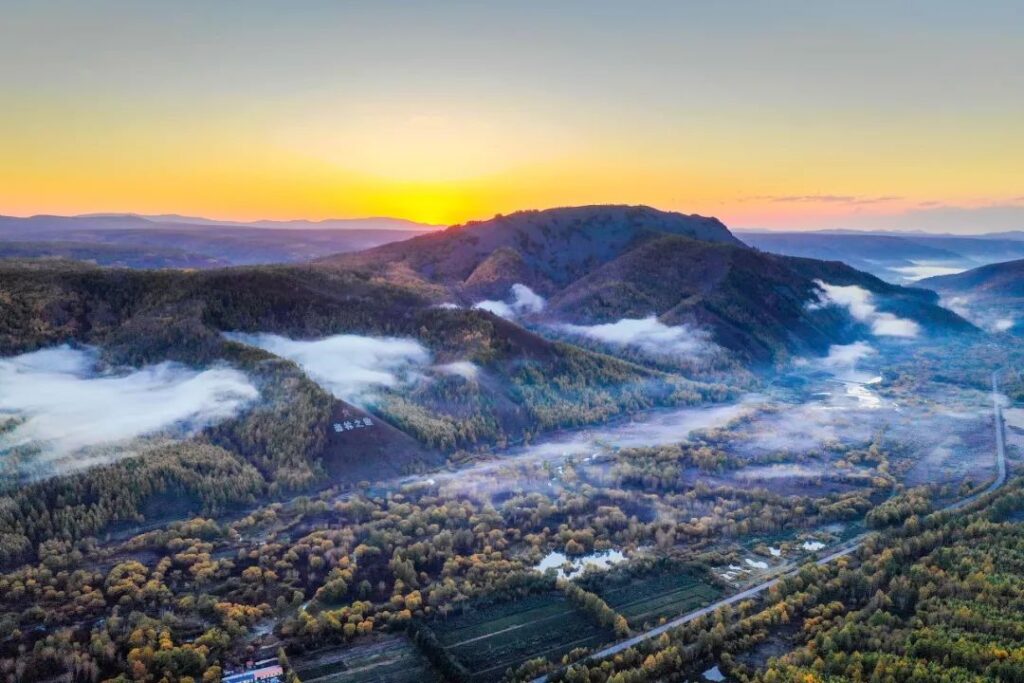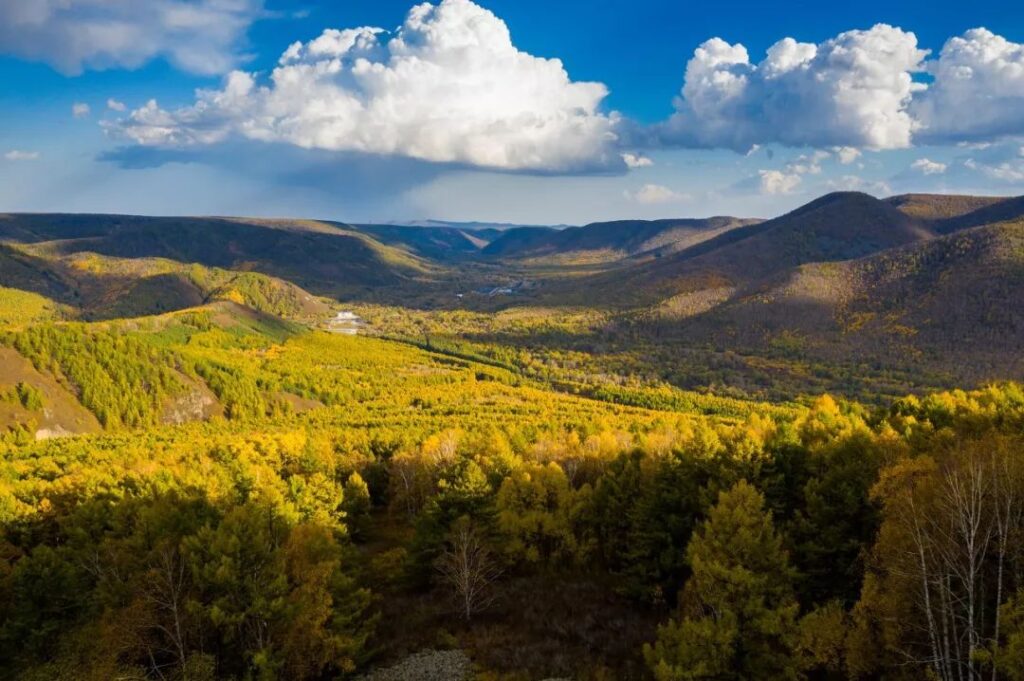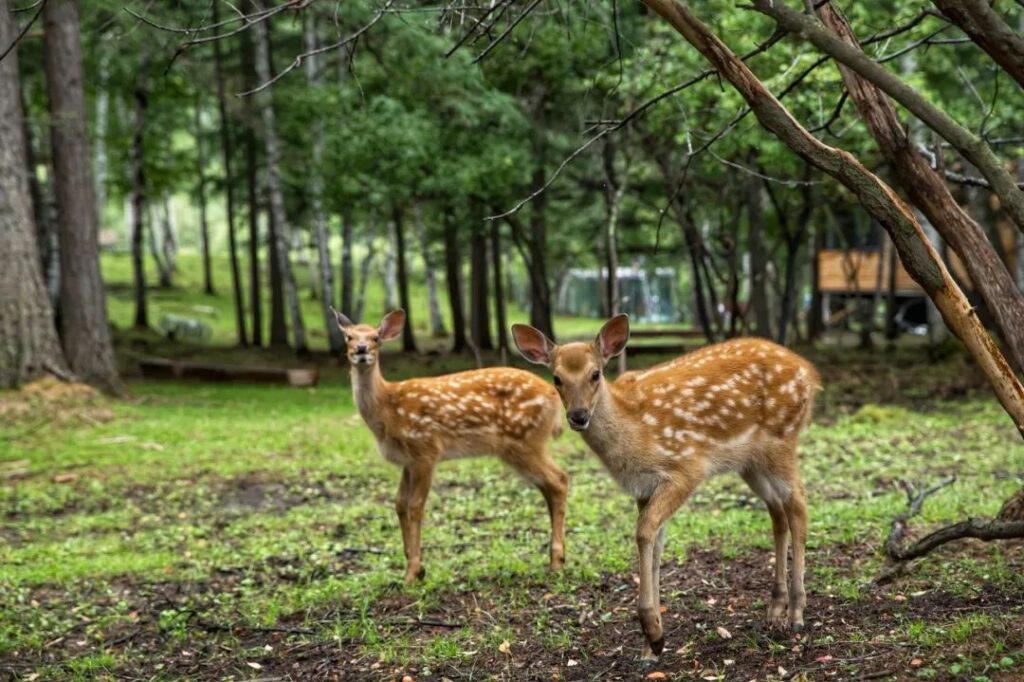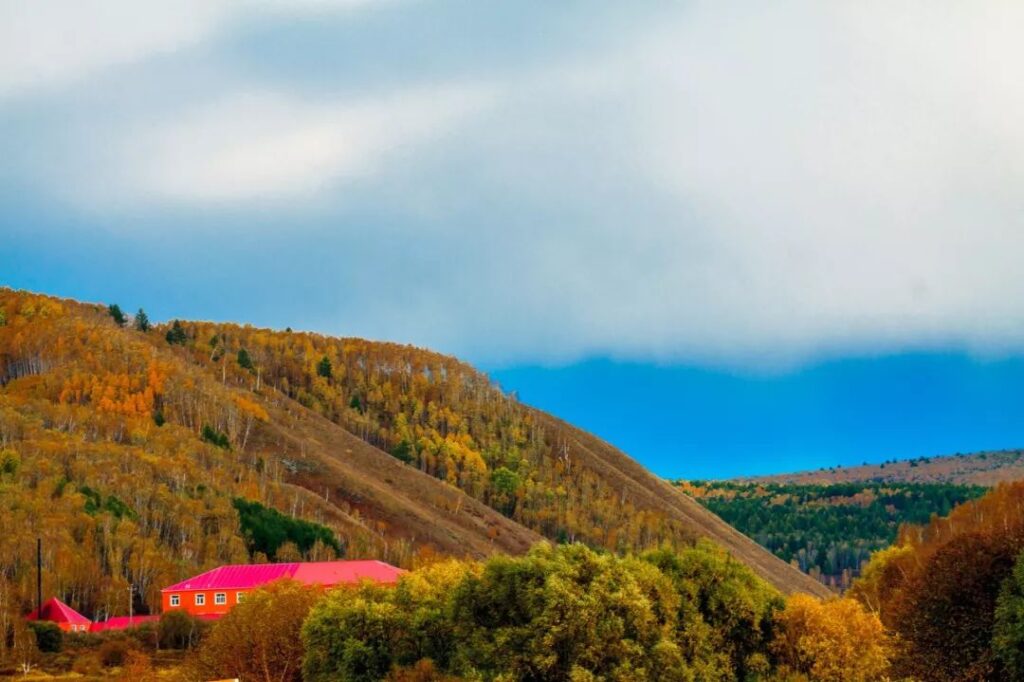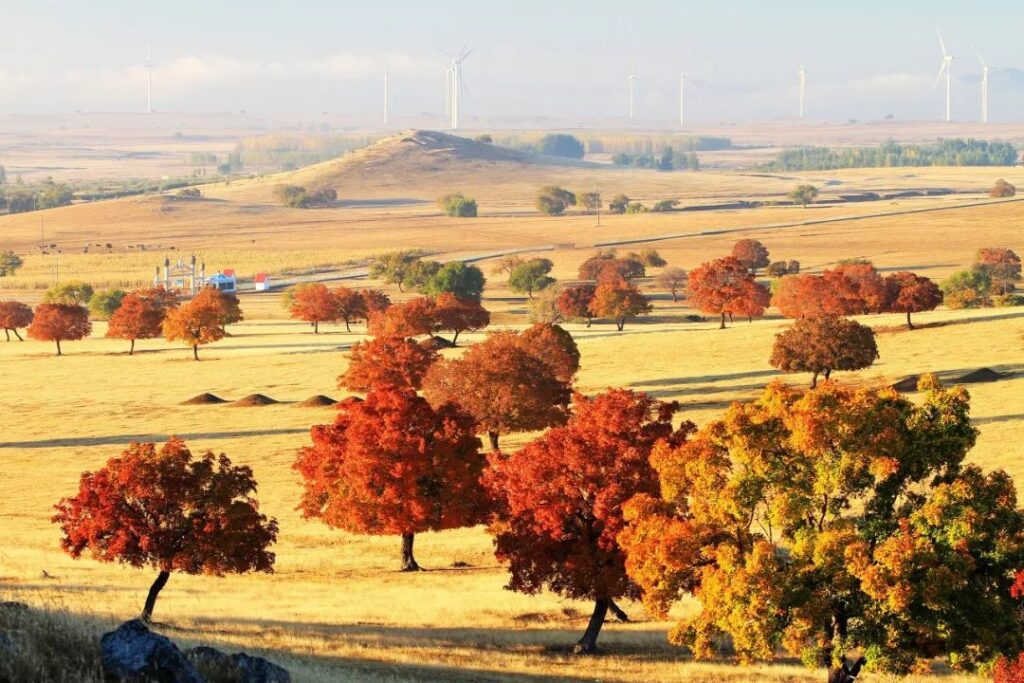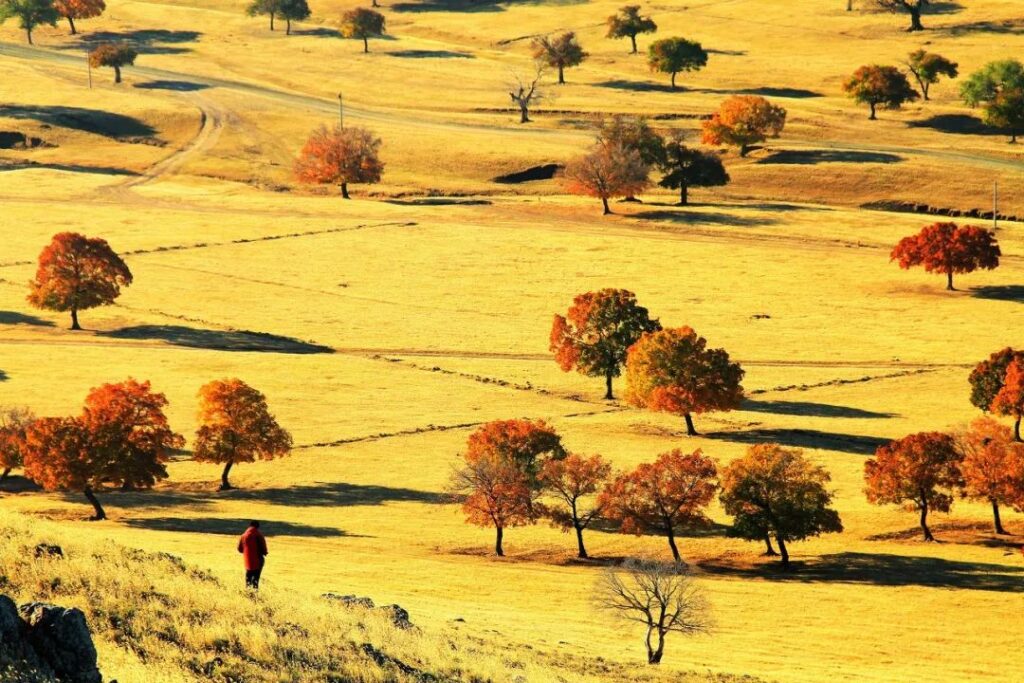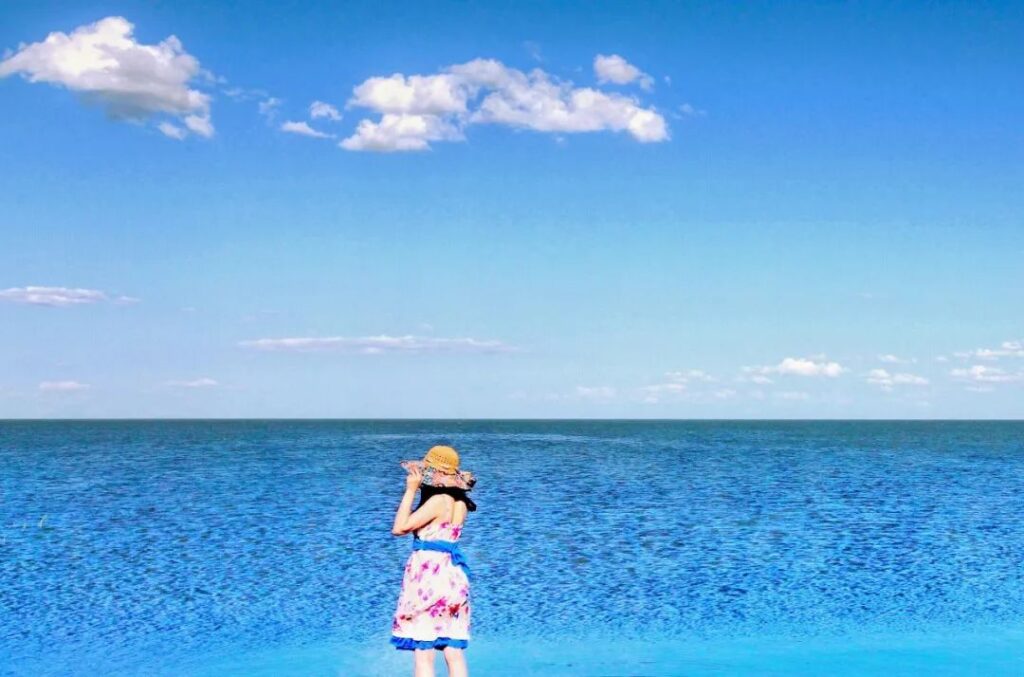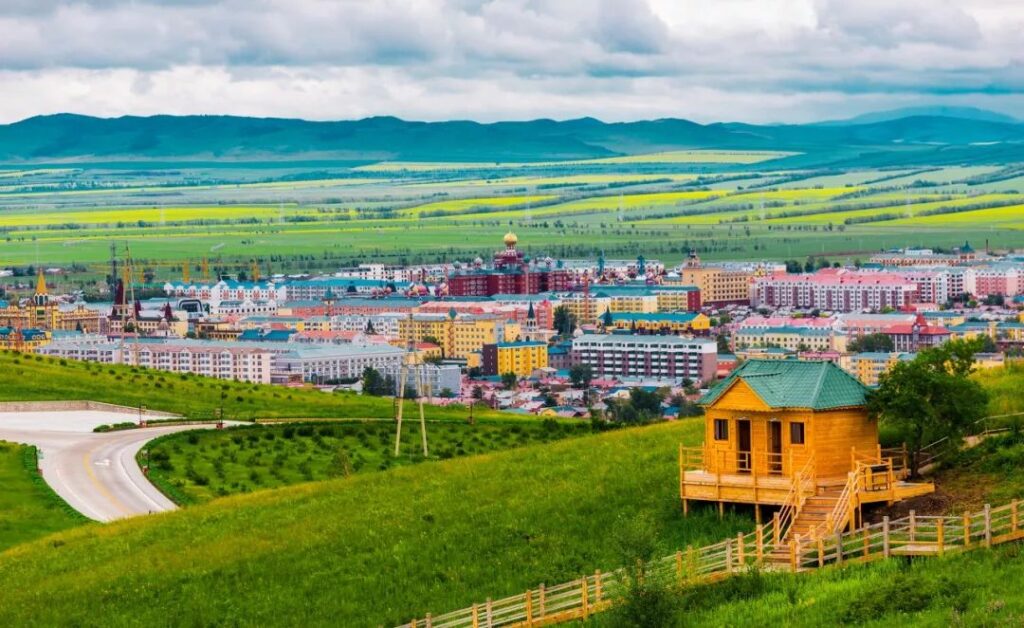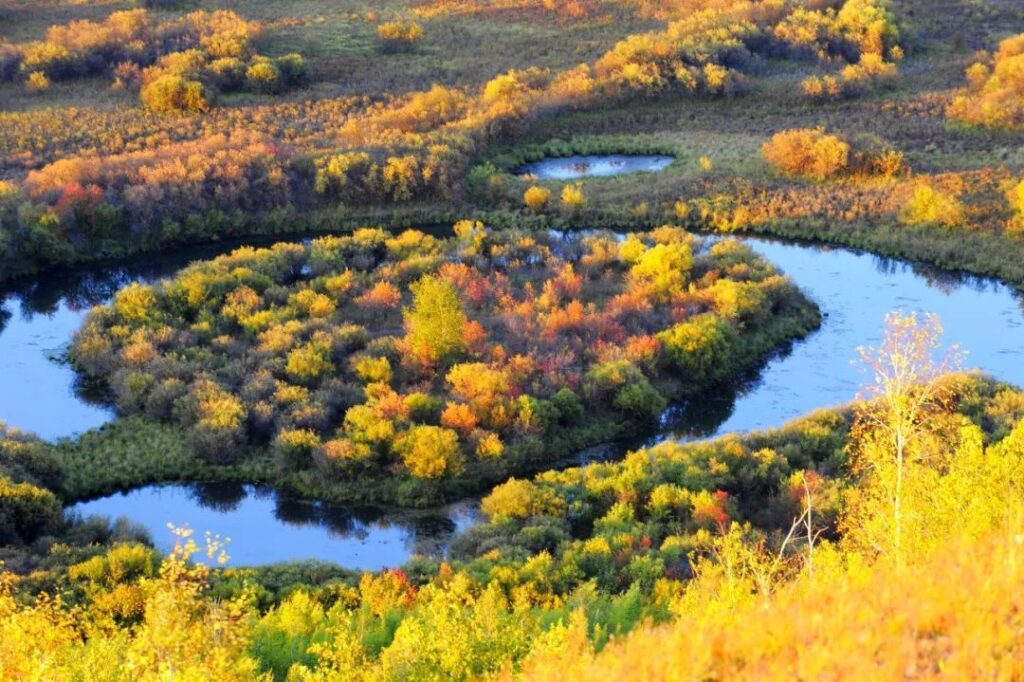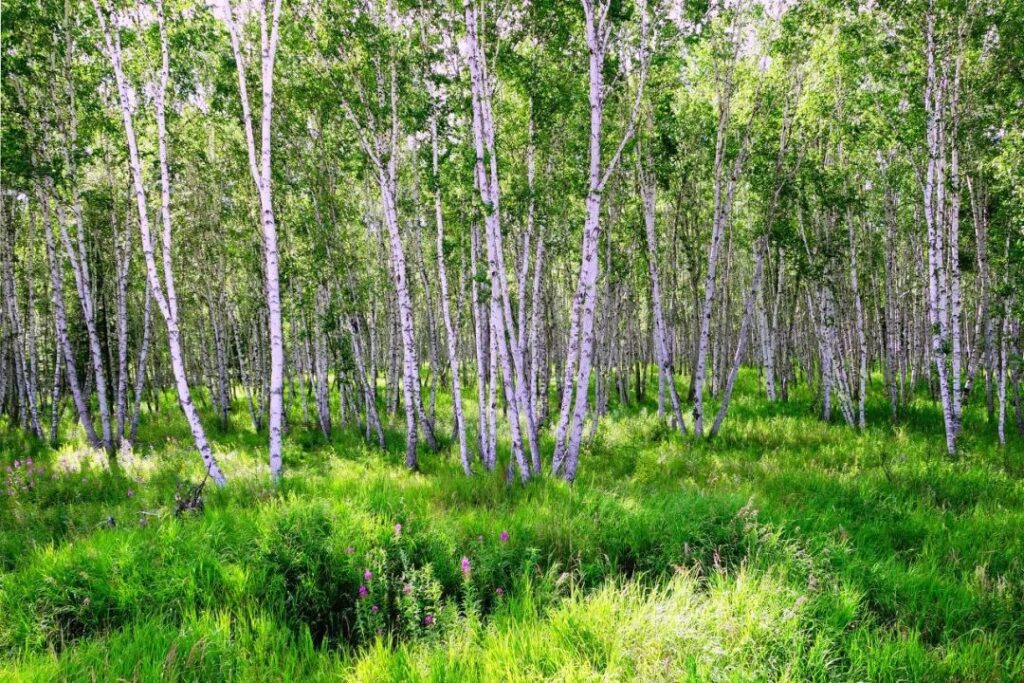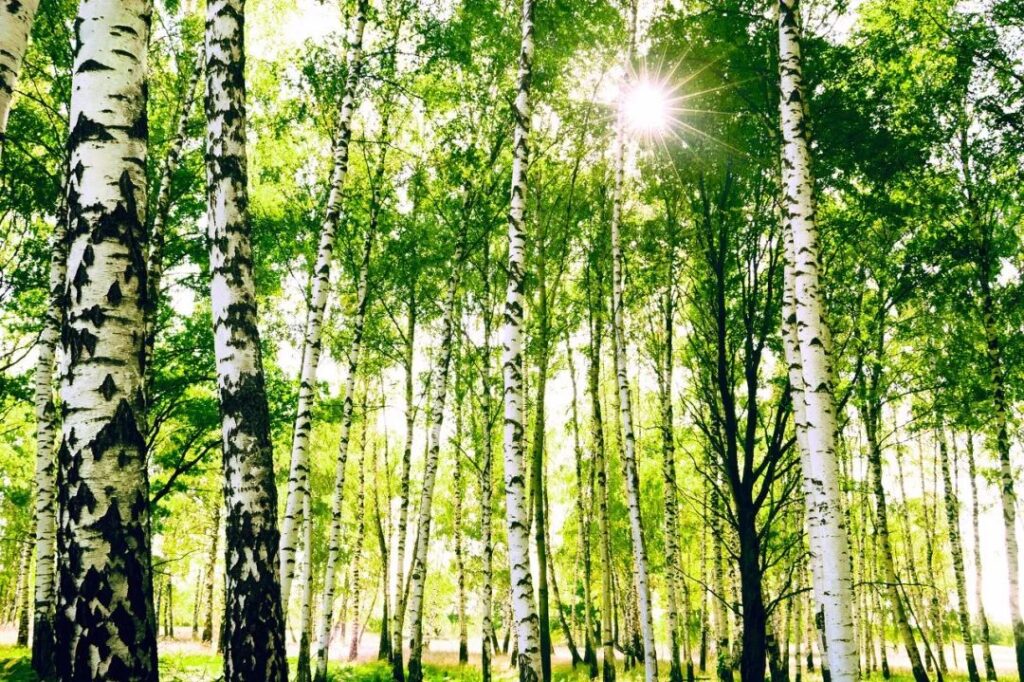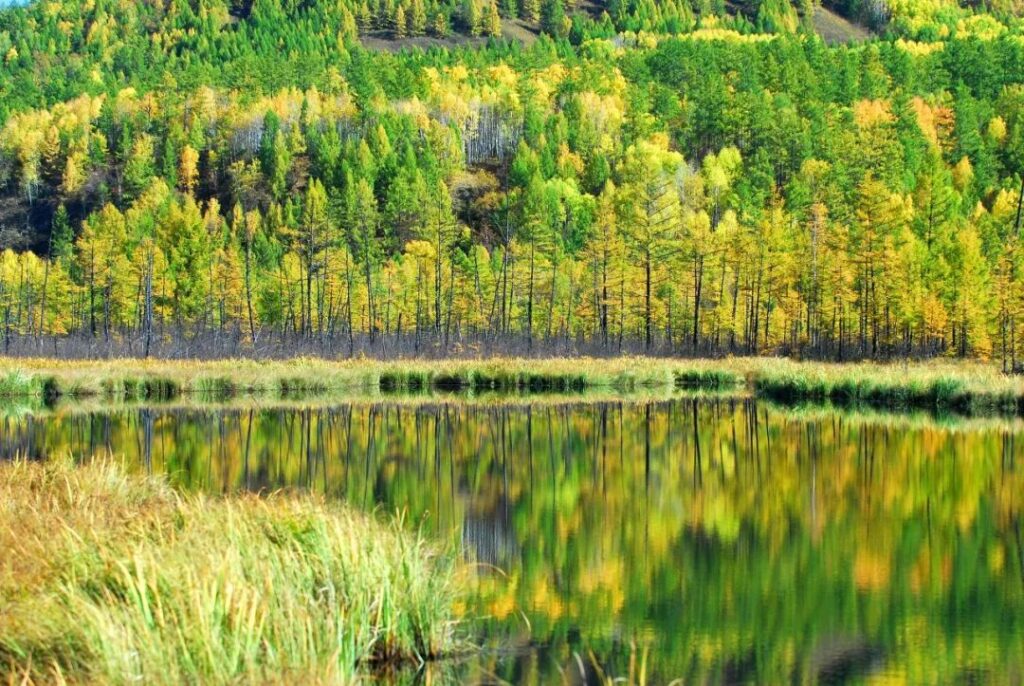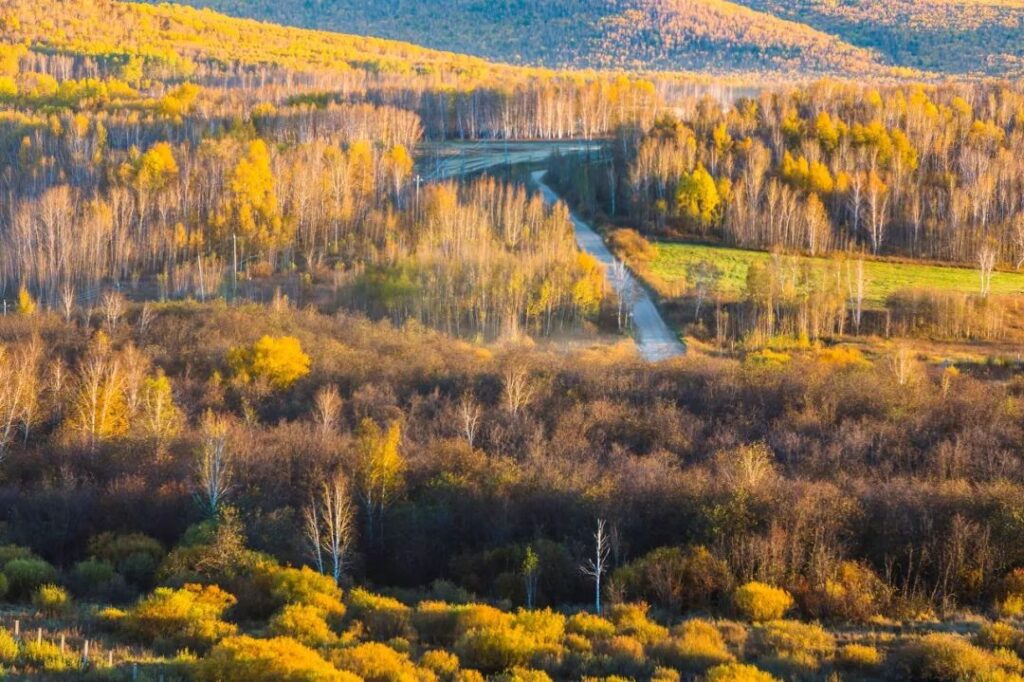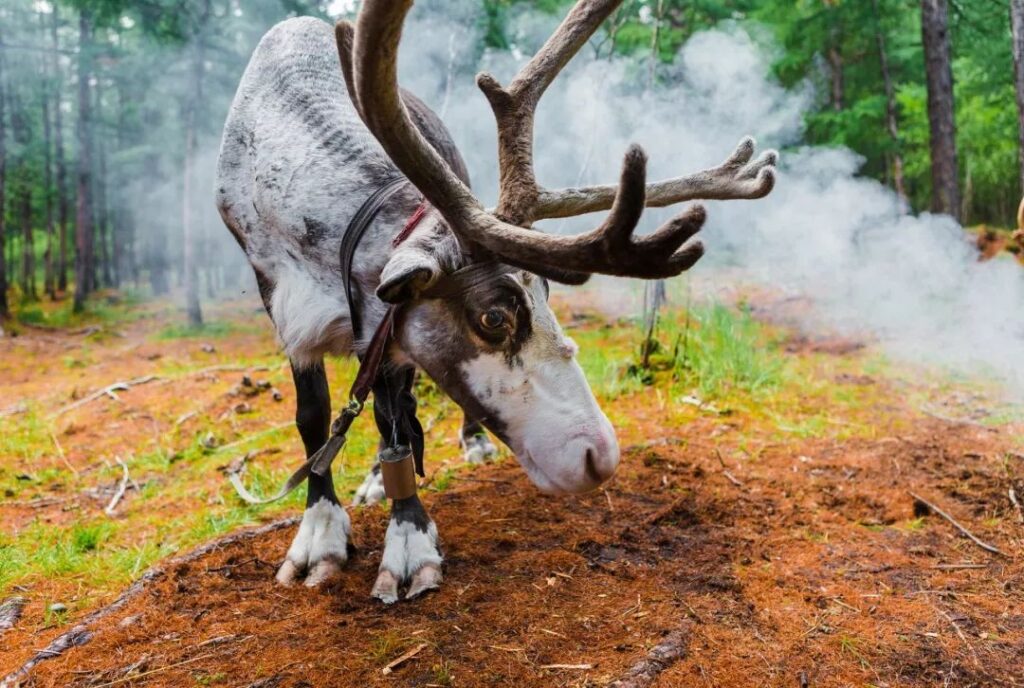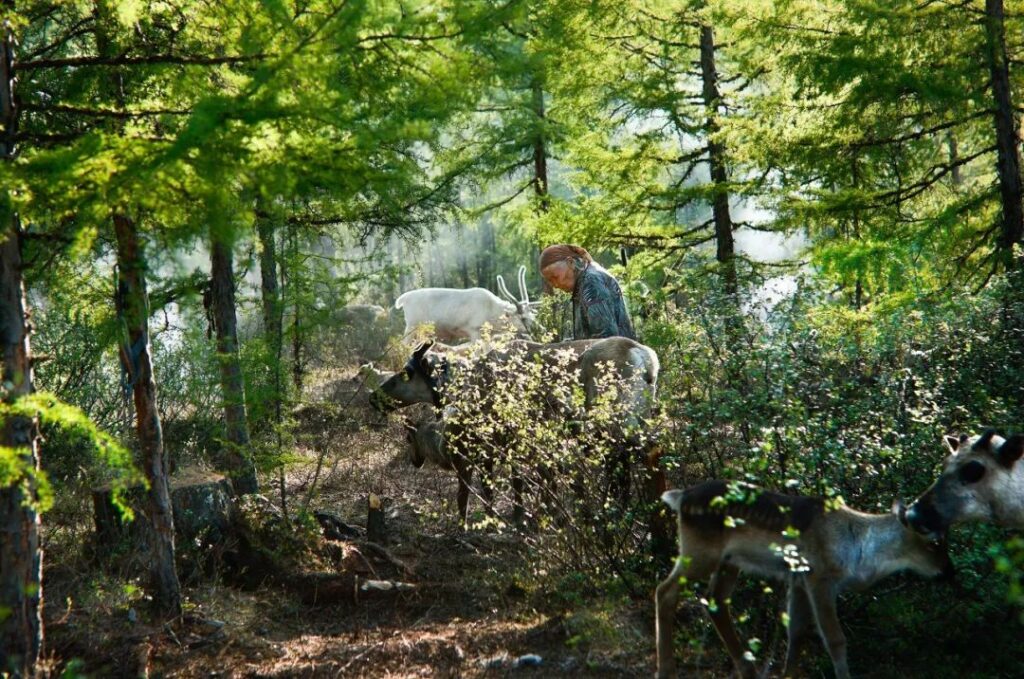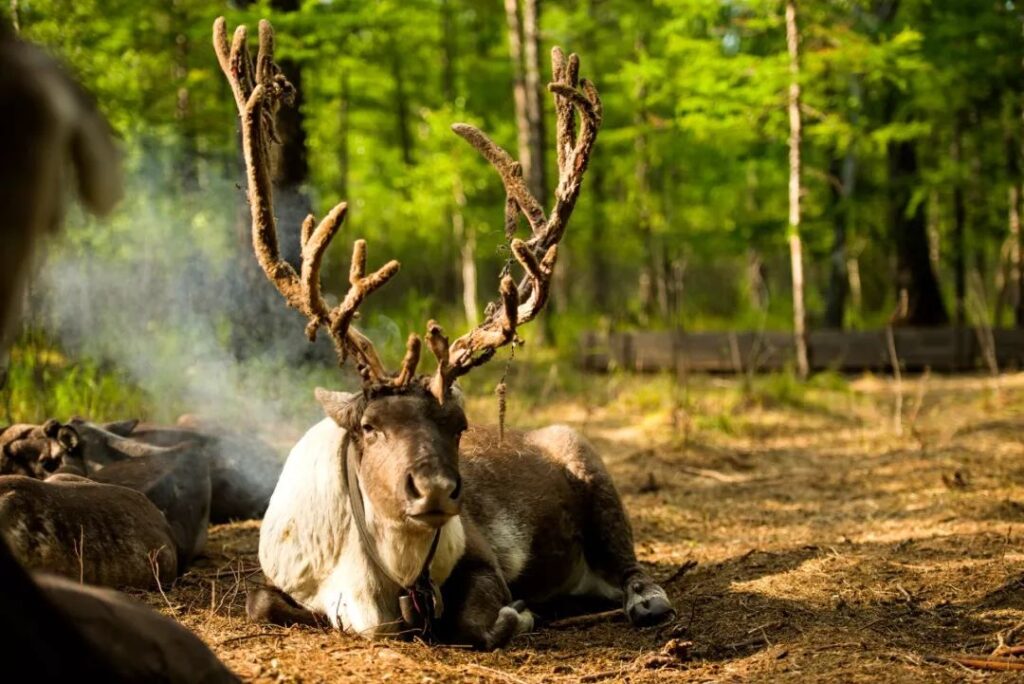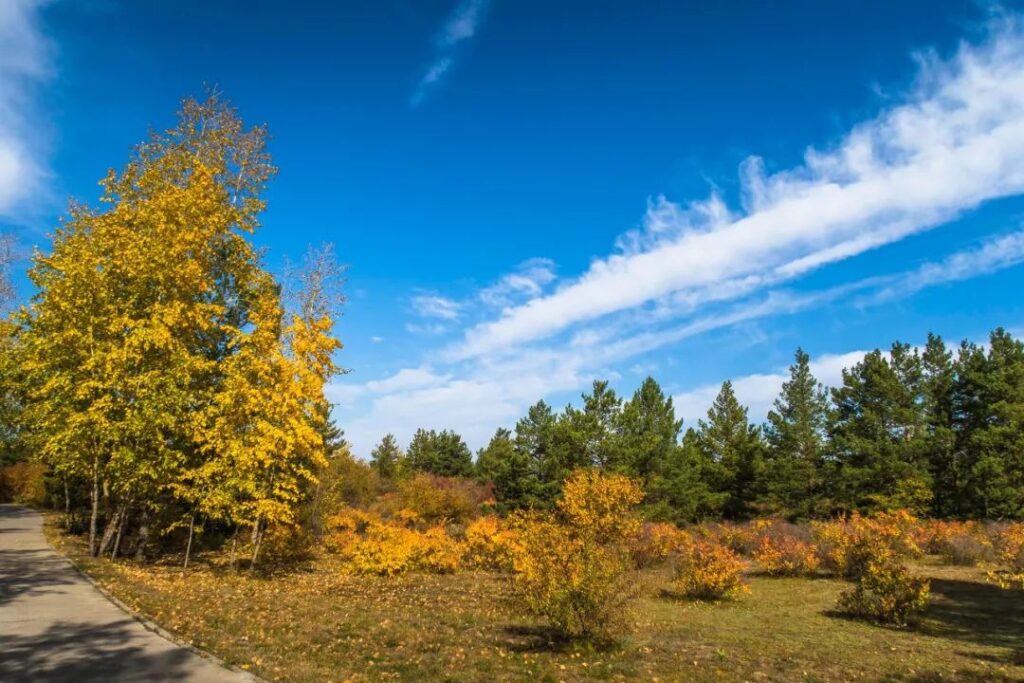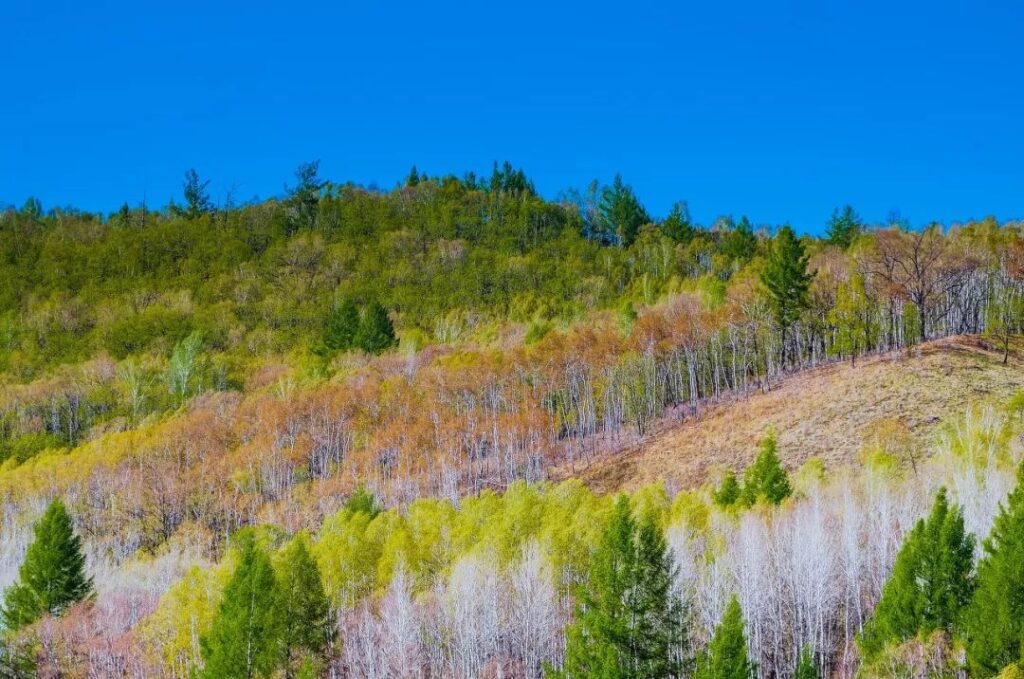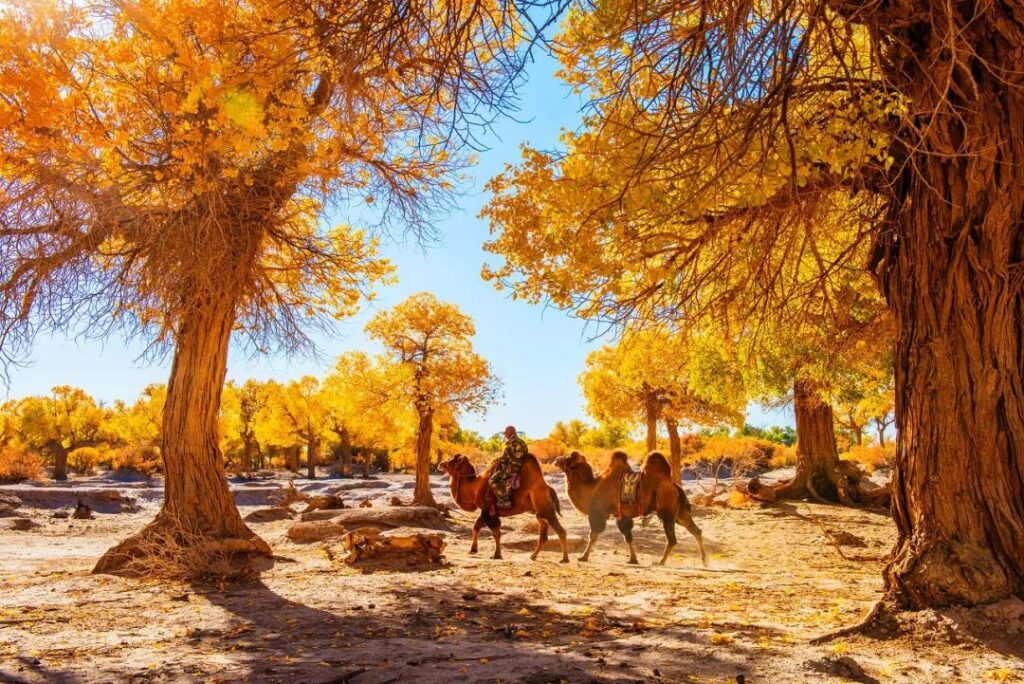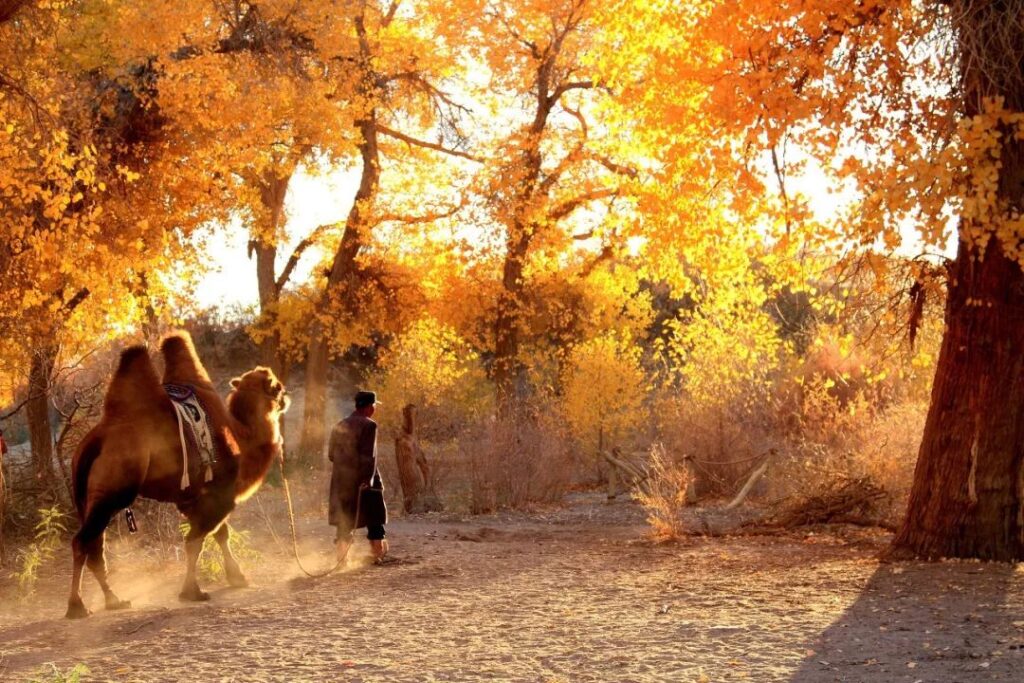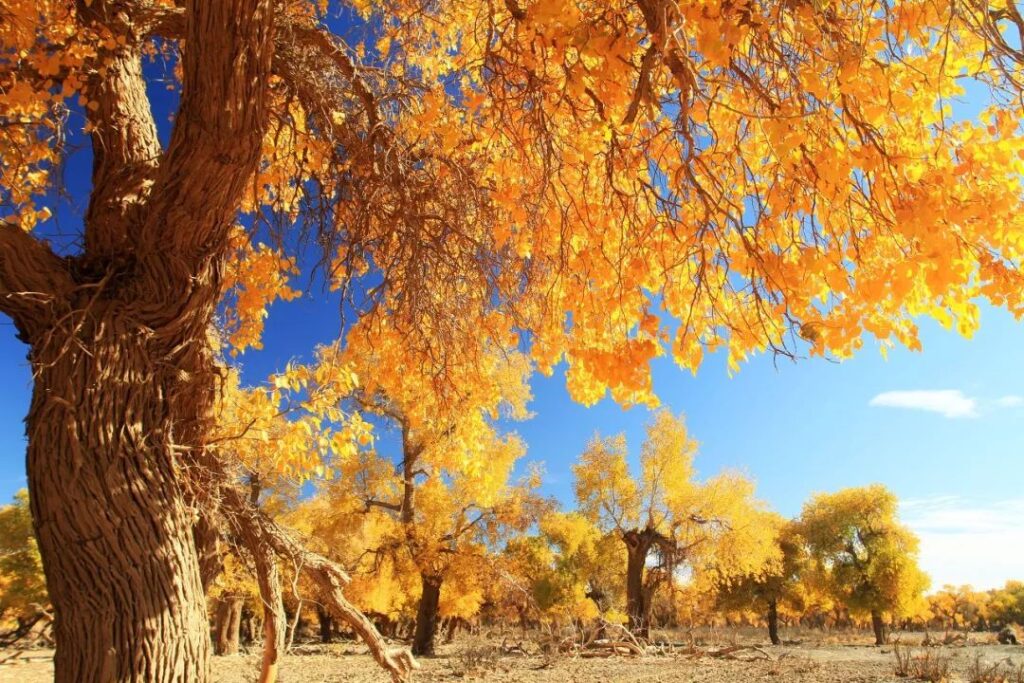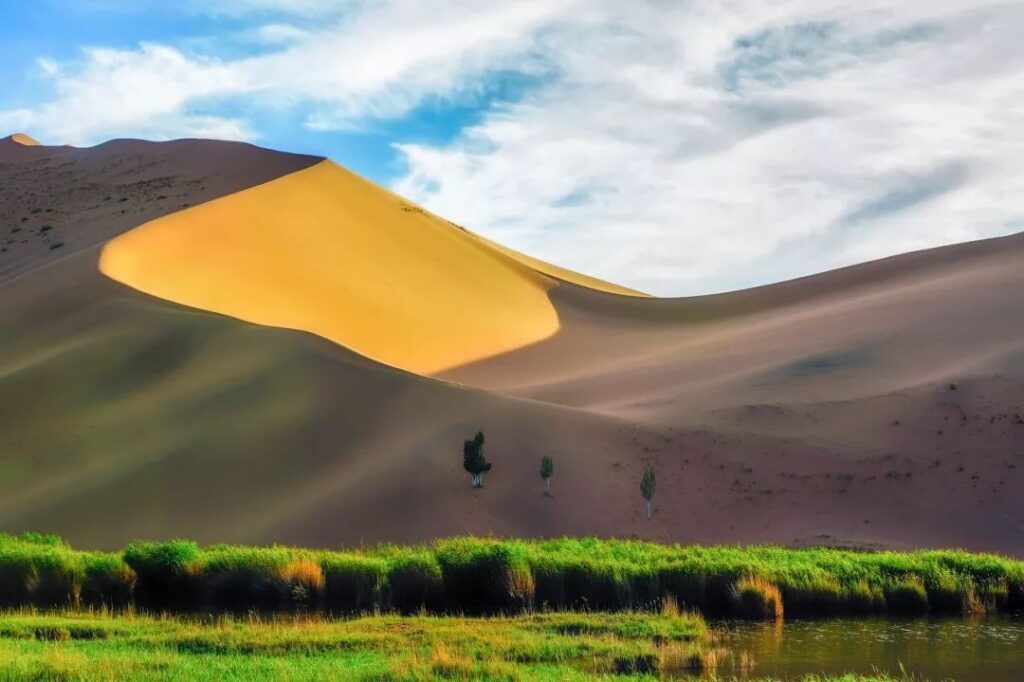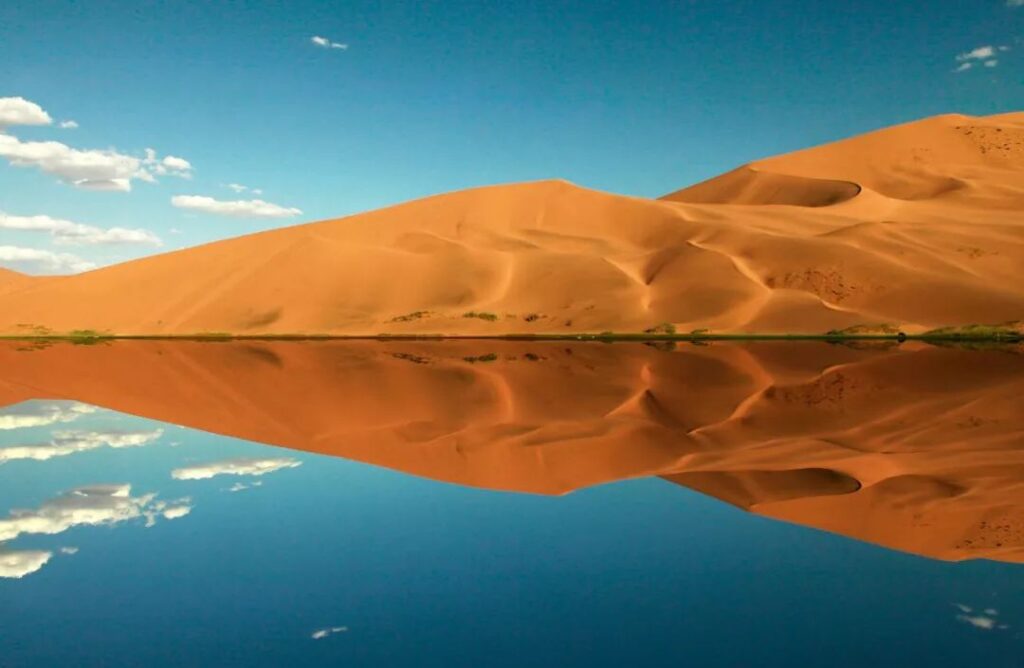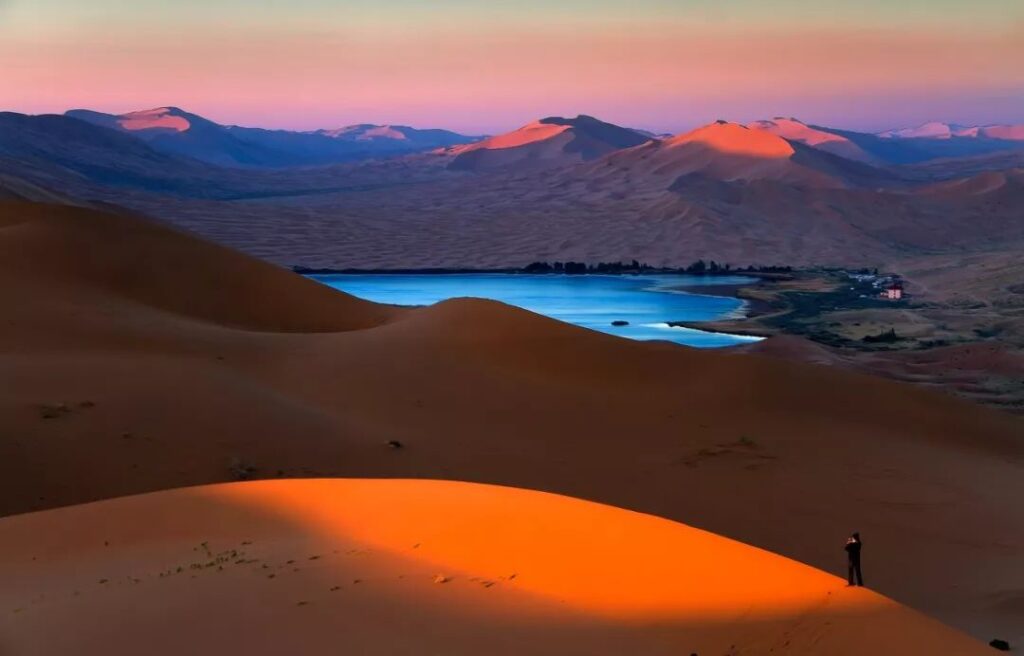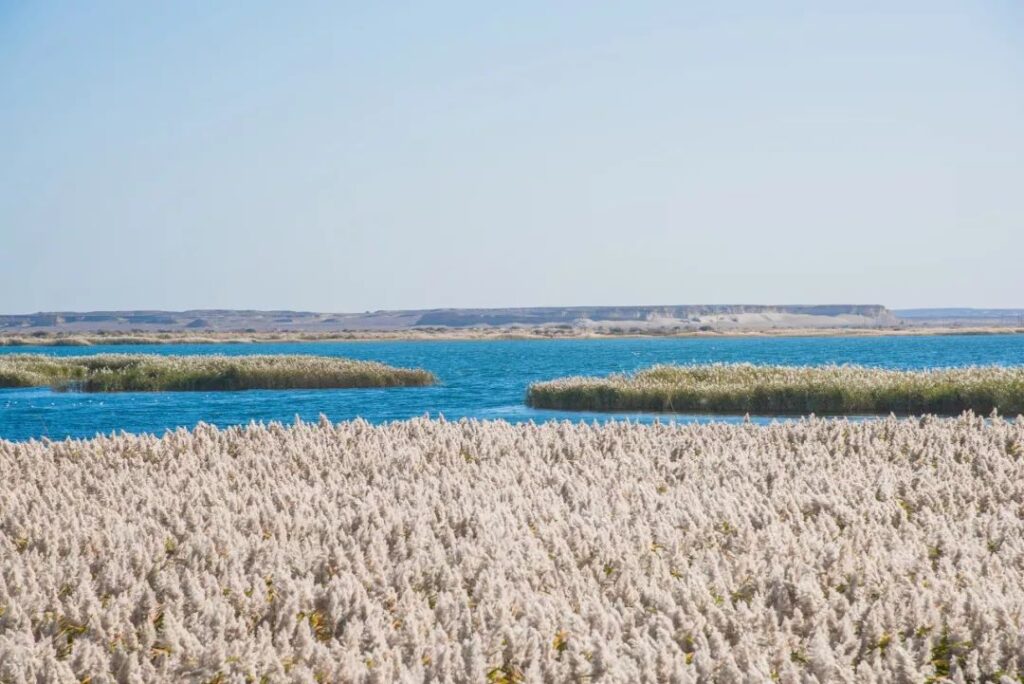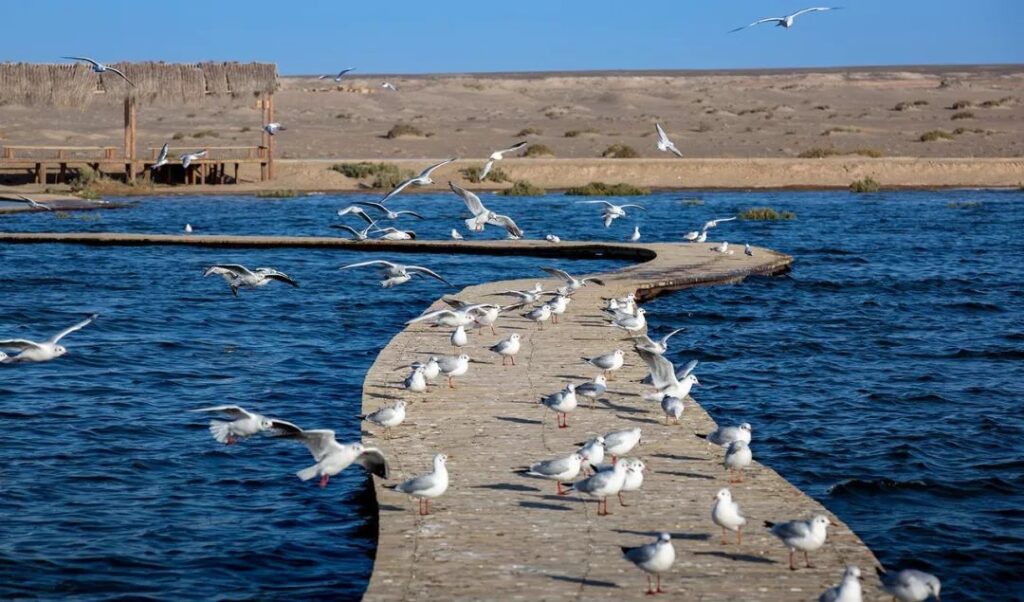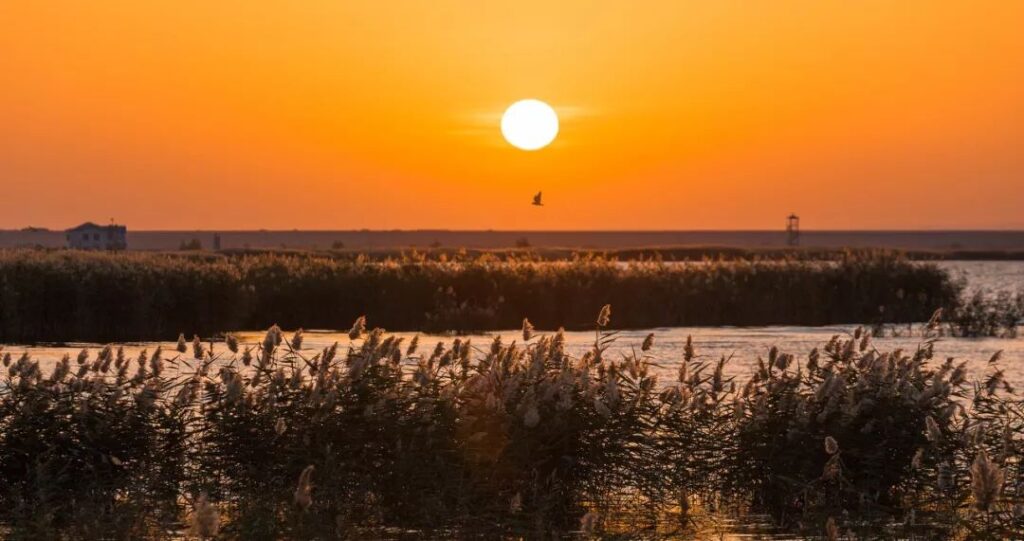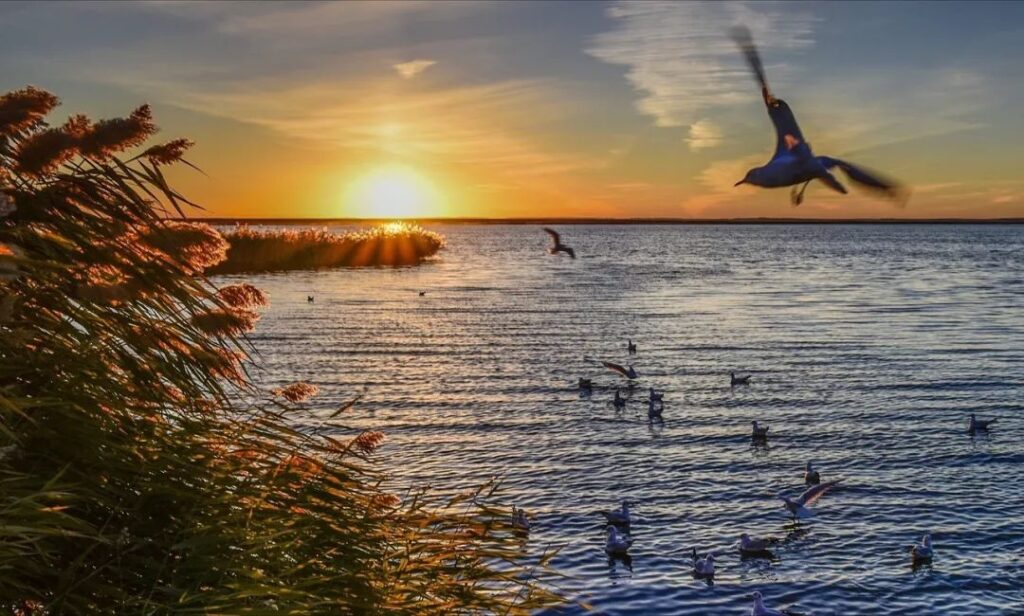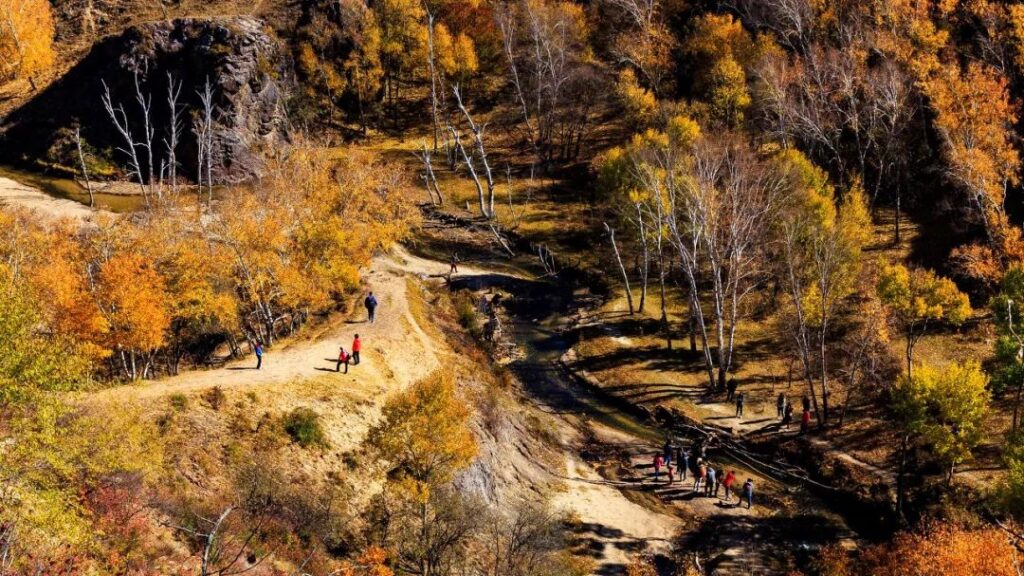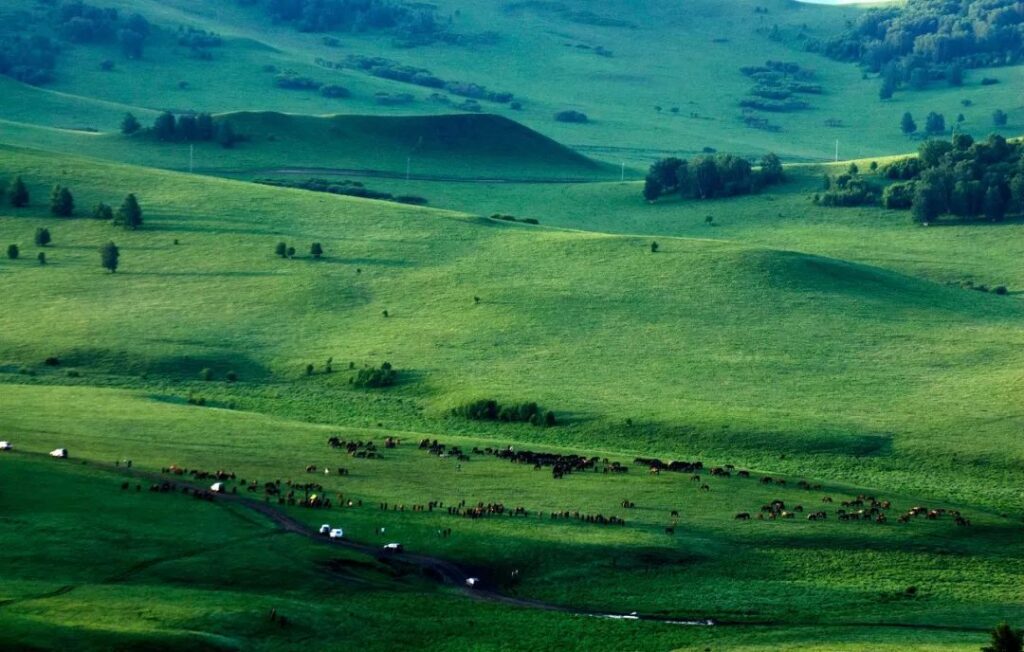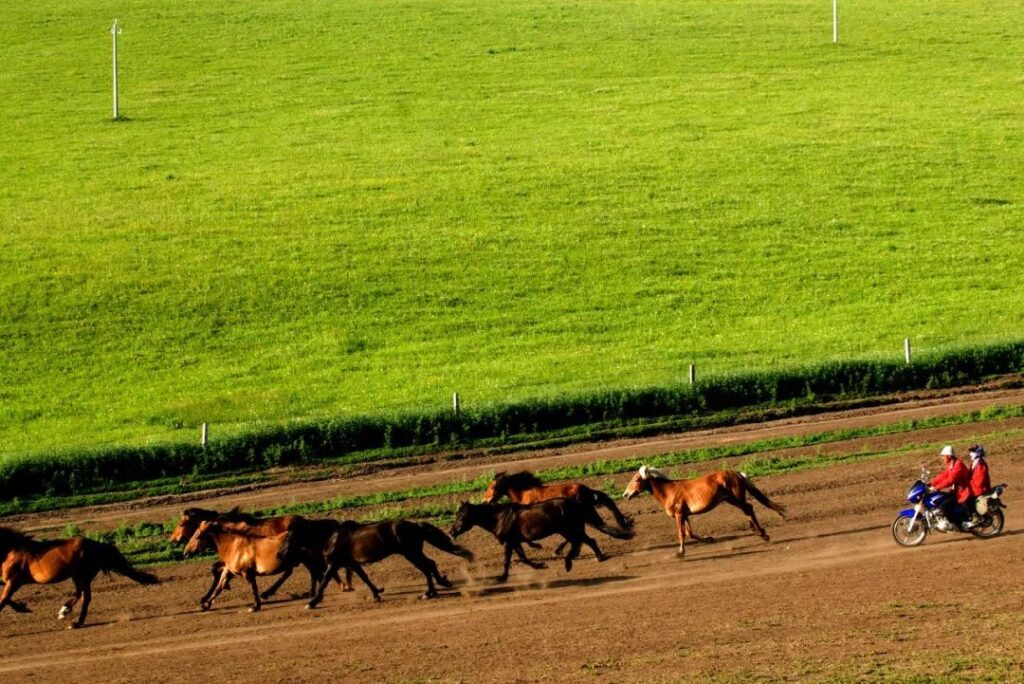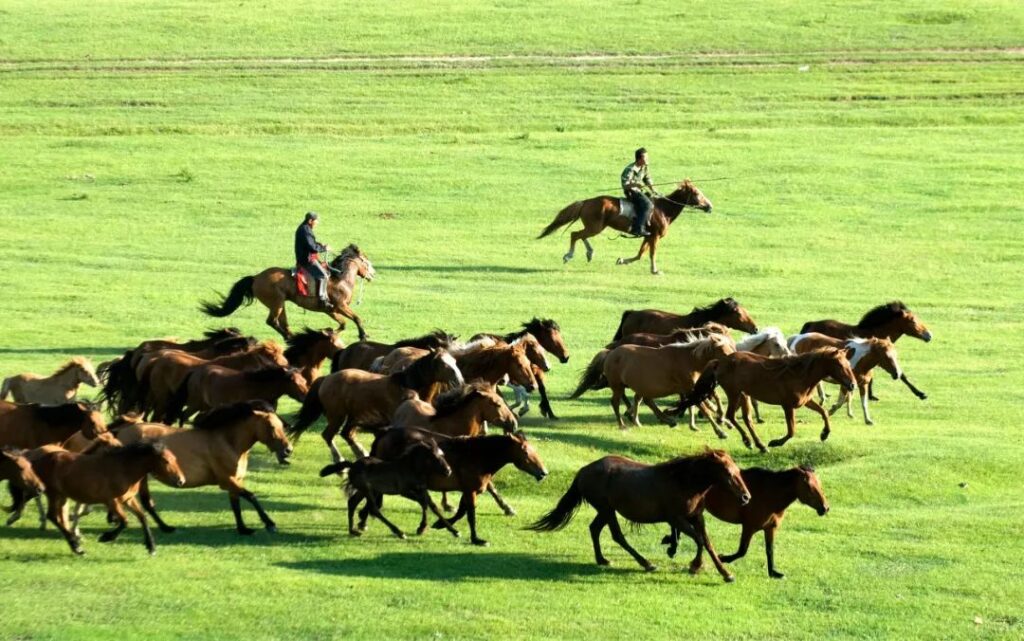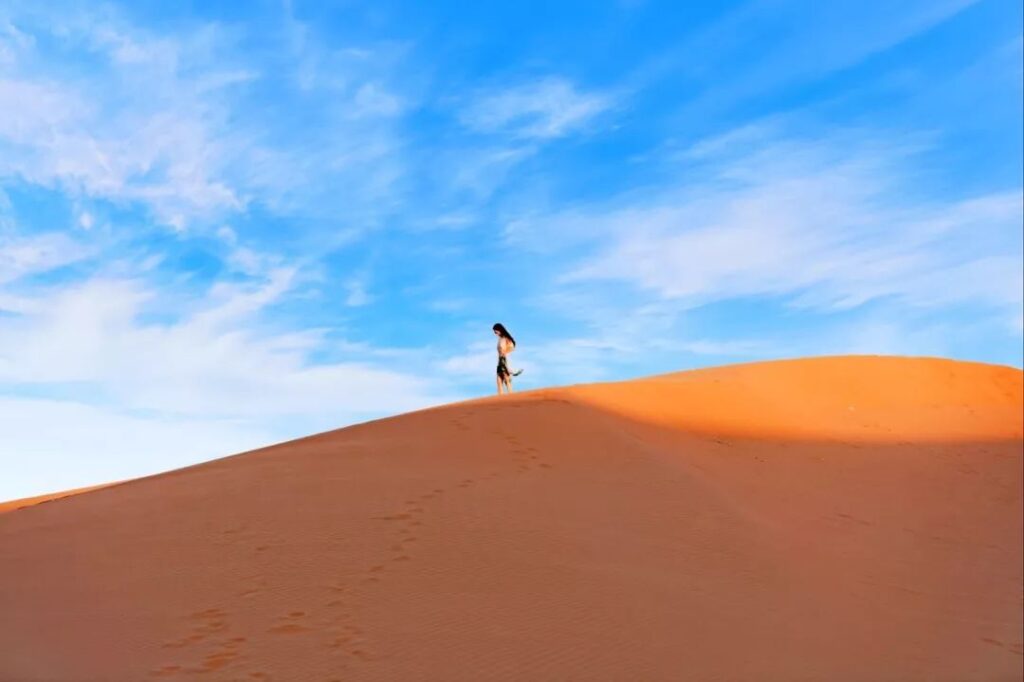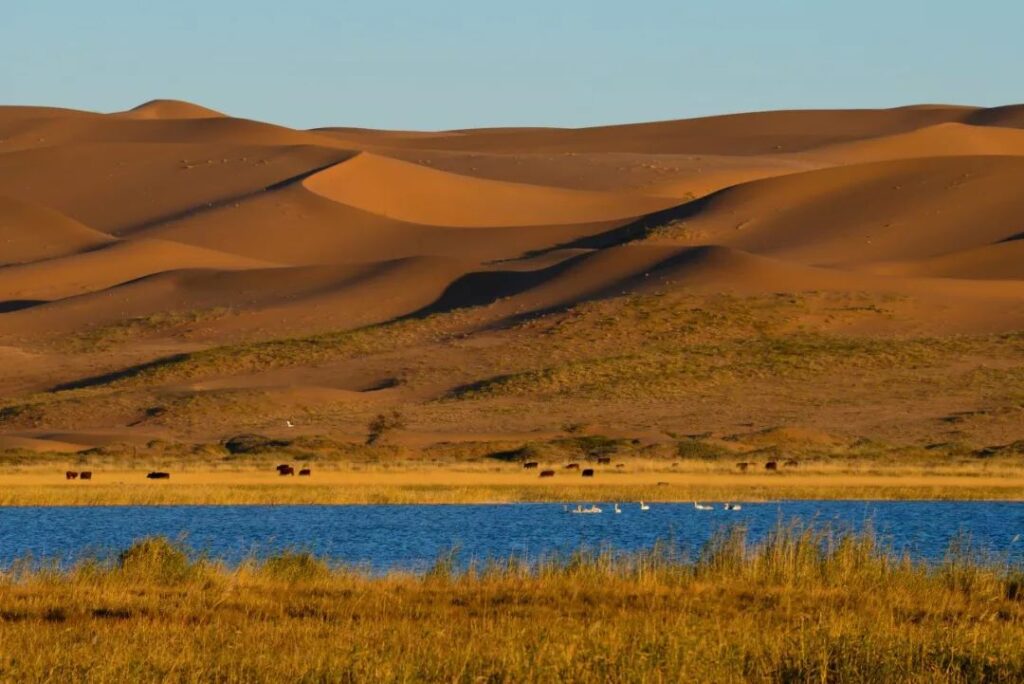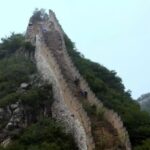In the north of China, there is a beautiful and magical land that captivates the hearts of those who have never set foot there and leaves an unforgettable impression on every visitor.

Dense forests, endless sand dunes, clear lakes, rugged rocks, tranquil and unique villages, and countless tempting delicacies – this place can satisfy all one’s imaginations about travel.

Whether you are a free-spirited young person or a seasoned traveler who has been all over the world, everyone has their own unique love for Inner Mongolia.
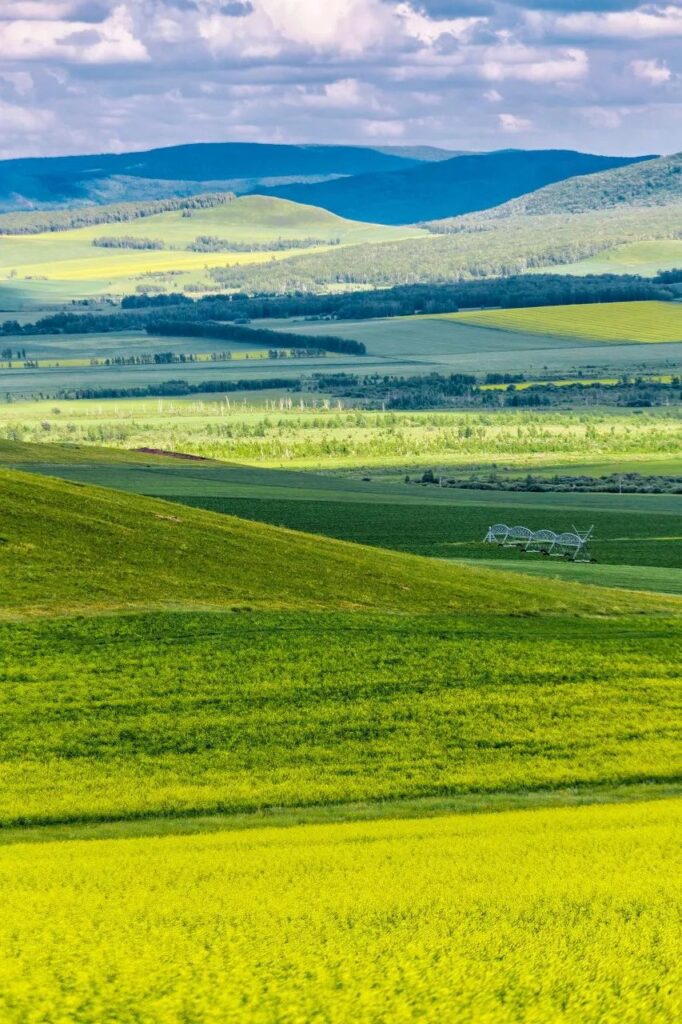
1.Aershan National Forest Park
This is the representative work of the ultimate autumn colors in the Greater Khingan Range. The most beautiful leaves adorn the most colorful forest.


In autumn, when the summer resort crowds have retreated, all the beautiful scenery here is exclusively enjoyed. Freely roam in the boundless golden forest, with the sound of autumn leaves underfoot.

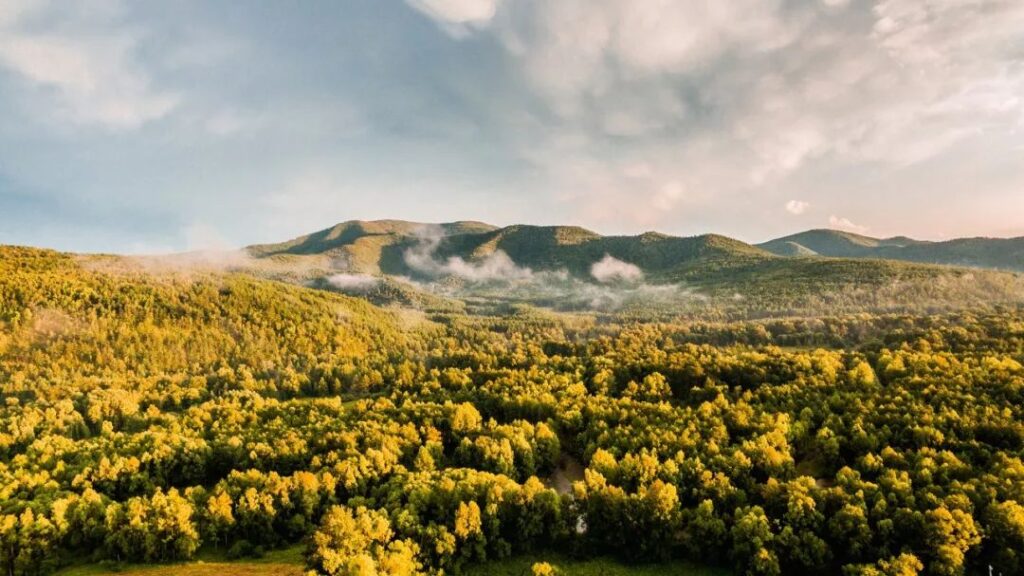
2.Aershan Railway Station
The Aershan Railway Station is a product of the Japanese Kwantung Army’s occupation period.

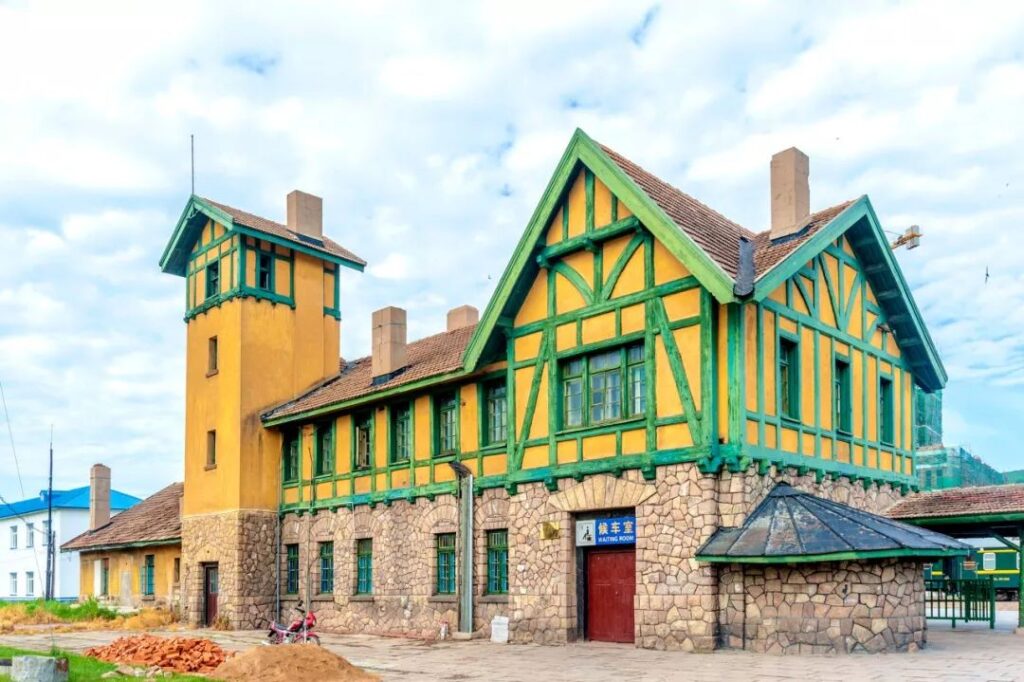
The small station carries history, small but exquisite, intoxicating. For more than 80 years, the station has retained its original appearance. Every brick and every pillar here has experienced nearly a century of wind and rain.


3.Bailang Peak
Bailang Peak is located in the middle section of the Greater Khingan Range, only 5 kilometers away from Bailang Town. It is also one of the filming locations for the TV show “Dear Inn”.
The mountains are high and the forests are dense, with ravines crisscrossing and rivers everywhere. There are also nearly 200 hectares of glacial remains at the top of the peak, and of course, a group of lovely deer.
4.Oroqen
This was once one of the filming locations for the fourth season of “Where Are We Going, Dad?”. Entering Oroqen, you can follow the reindeer through the totem trail and enter the primitive religious world, feel the mystery of the soul tree, and join the tribal hunters into the heart of the primitive forest, experiencing various unique hunting methods between the Tianhe Gorge and the mysterious Oroqen Lake.
5.Halaha River
Most of China’s rivers are a spring river flowing eastward, rushing to the sea and never returning.

Only the Halaha River is an exception, and the valley where the Halaha River and the Ulun River converge is a paradise for photography enthusiasts, known as the most beautiful non-freezing section of the Halaha River.
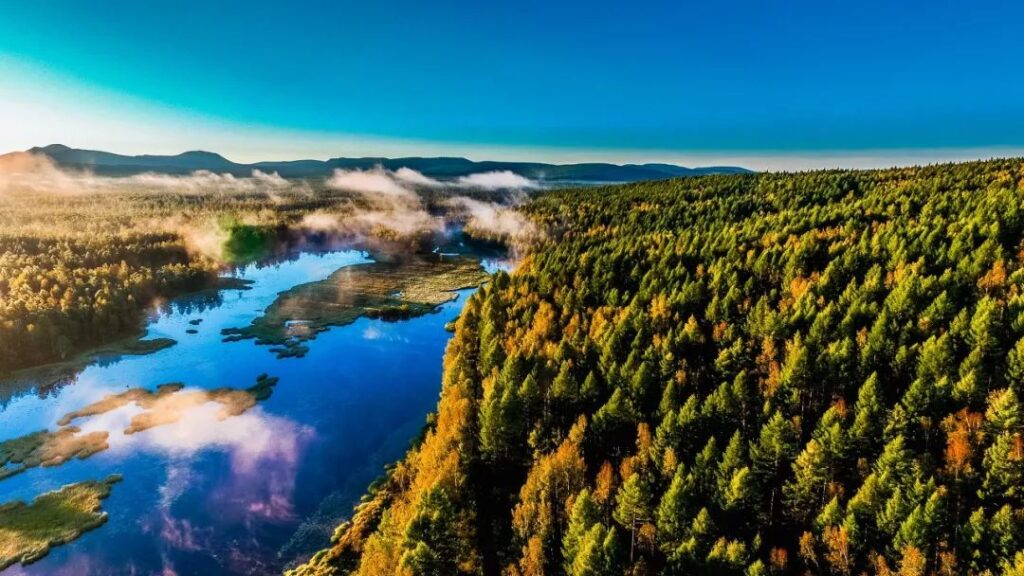
6.”Non-Freezing River”
It is actually a section of the Halaha River. Due to the presence of a large amount of geothermal heat nearby.
When the upstream and downstream are frozen three feet thick, the river here not only does not freeze, but also grows aquatic plants, with steam rising from the water surface.
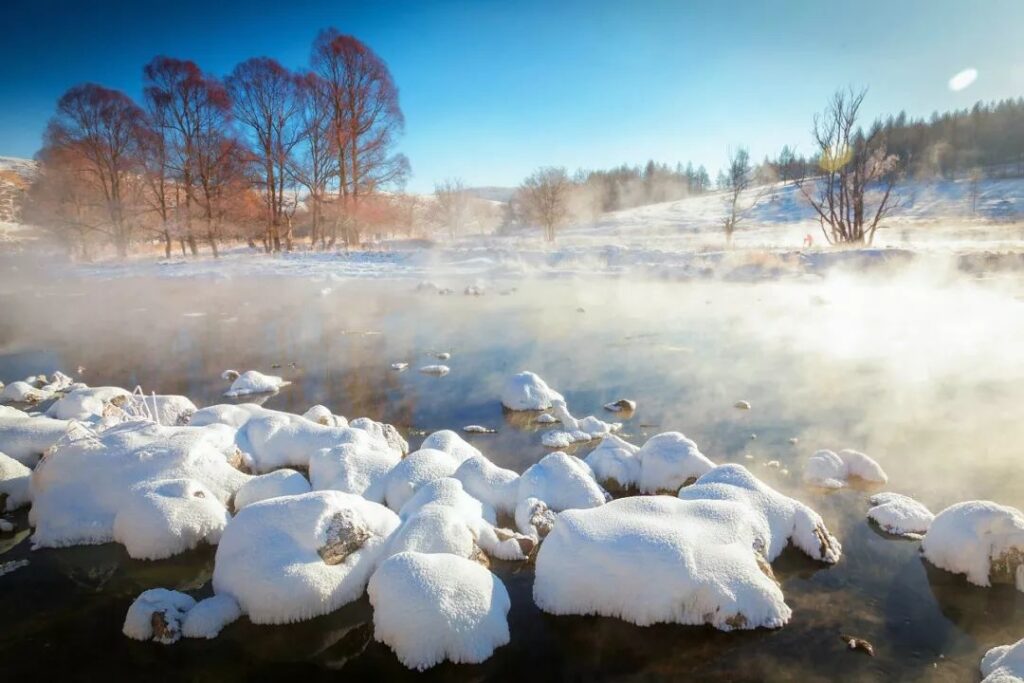
The non-freezing river in winter is the most beautiful. When the sun sets, the river is shrouded in mist, with frost on both sides, like a fairyland on earth.
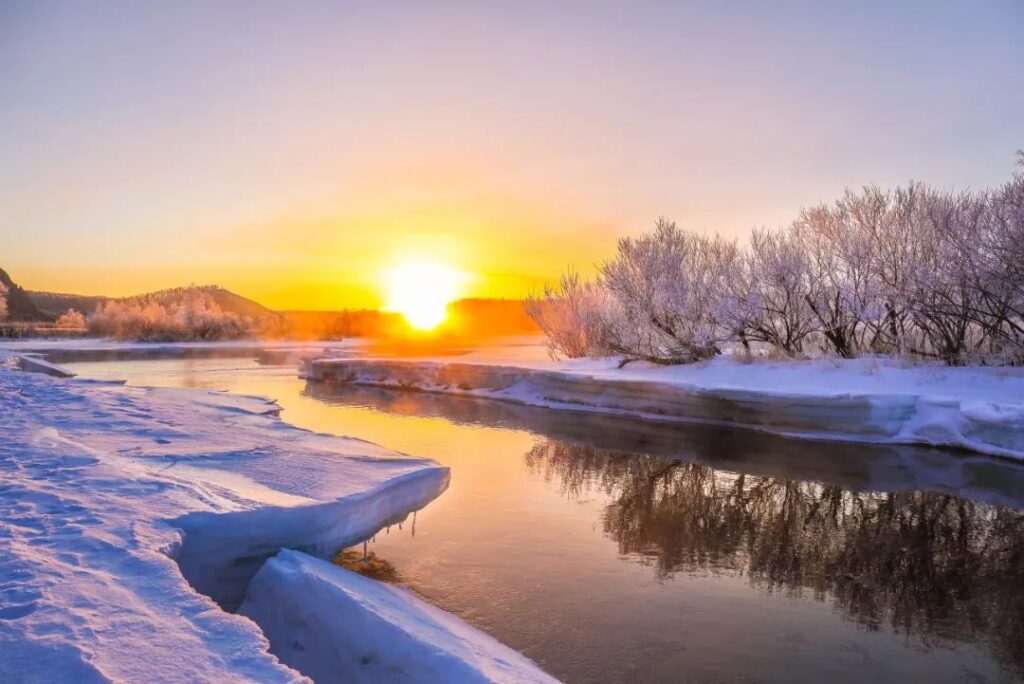

7.Horqin Grassland
When I first watched the TV series “Kangxi Dynasty”, I had a deep memory of this name. The grassland is dotted with golden white birch forests, making it different from other grasslands.

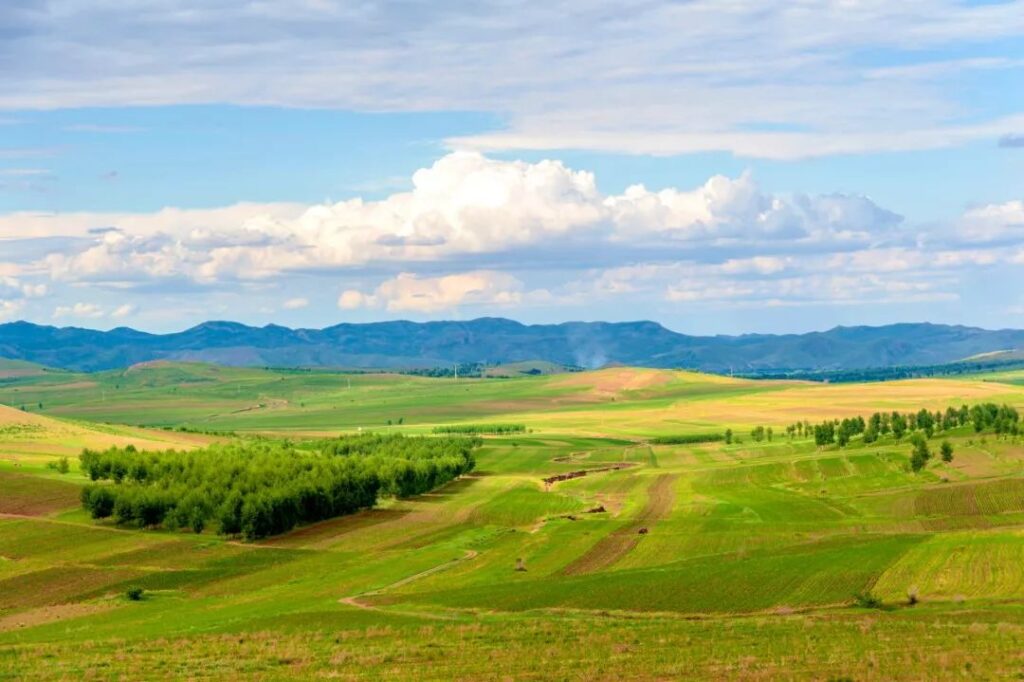
Every summer, the herdsmen migrate from the villages to the banks of the small river, setting up camp, grazing cattle and sheep. The scenery is simply like going back to a thousand years ago.
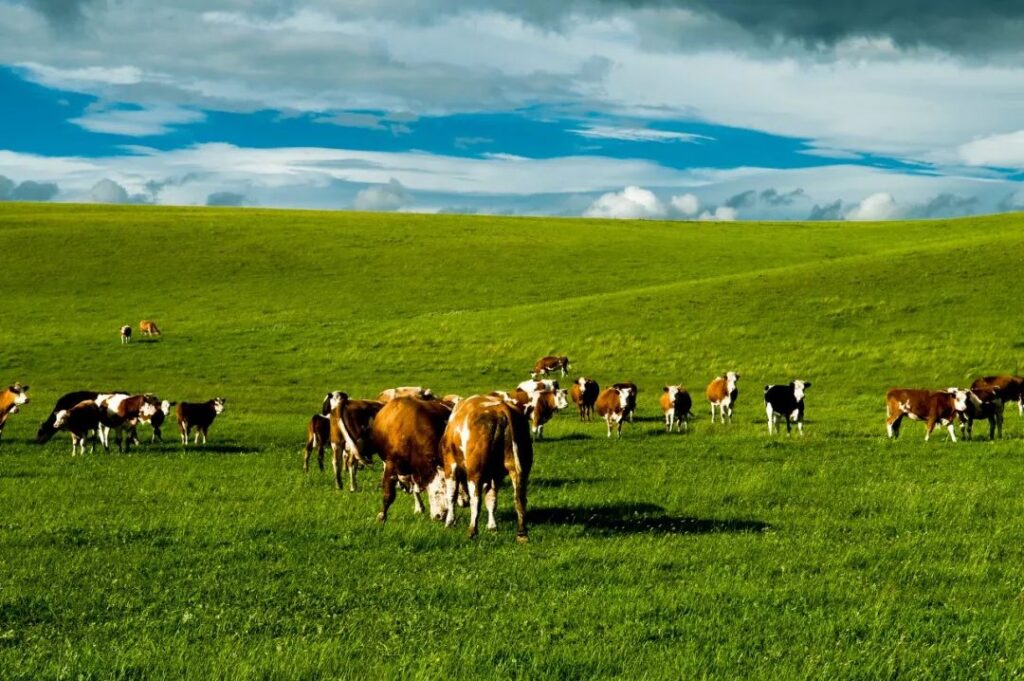
8.Daiqintala Five-Pointed Maple
On the way to Aershan, this is a surprising stopping point.

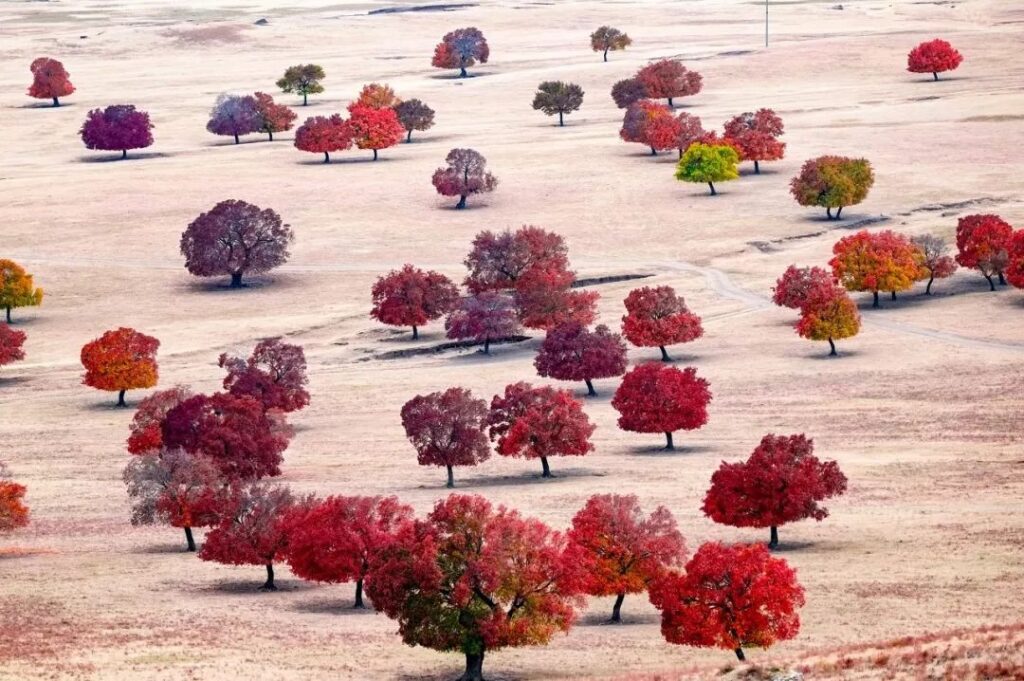
The Five-Pointed Maple Park is very much like a vast grassland, with five-pointed maples scattered in it. When the sun sets, climbing to the top of the hill and looking out, there are white horses grazing, moving flocks of sheep, and large patches of red and yellow maple forests, very comfortable.
9.Chol River
The Chol River has an outstanding style and is the largest tributary of the Nen River, the largest river in Hinggan League, and the second largest river in the Inner Mongolia Autonomous Region.


The colorful trees on both sides of the river, kissed by the sun, leave a patch of golden mottled light on the ground, river banks, and grass, shimmering, and this light and shadow is fascinating.
10.Hulunbuir Grassland
Perhaps you have seen its silhouette countless times in photos, but its true appearance cannot be captured by any camera, no matter how good.
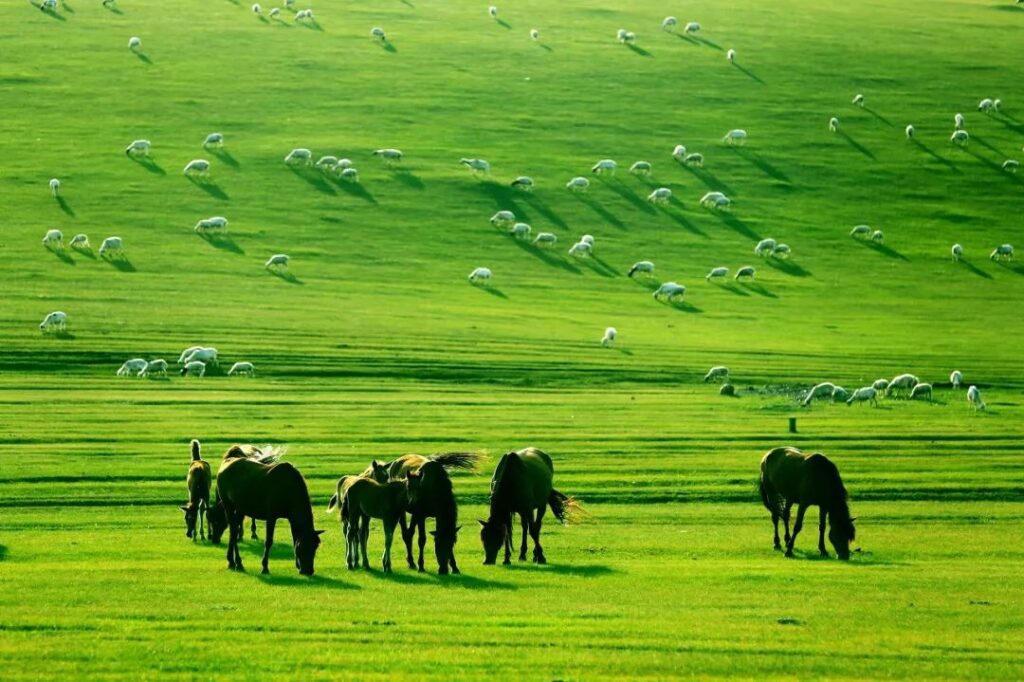
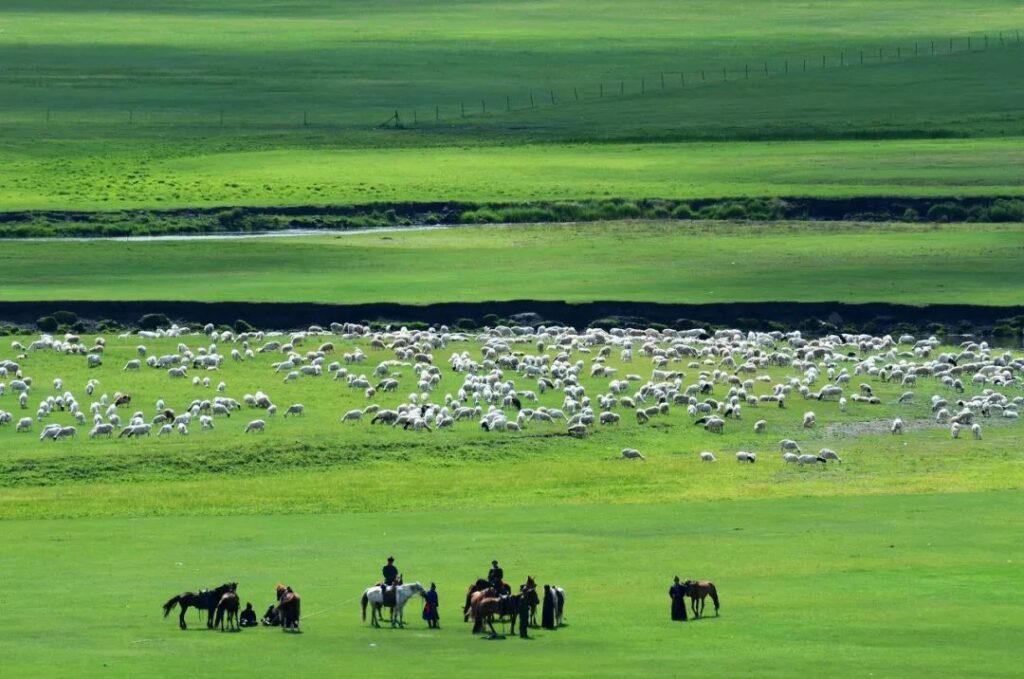
I have never seen such a blue sky, such green grass, such white clouds, and such clear rivers.
I think this is probably what it means to be too beautiful for words.
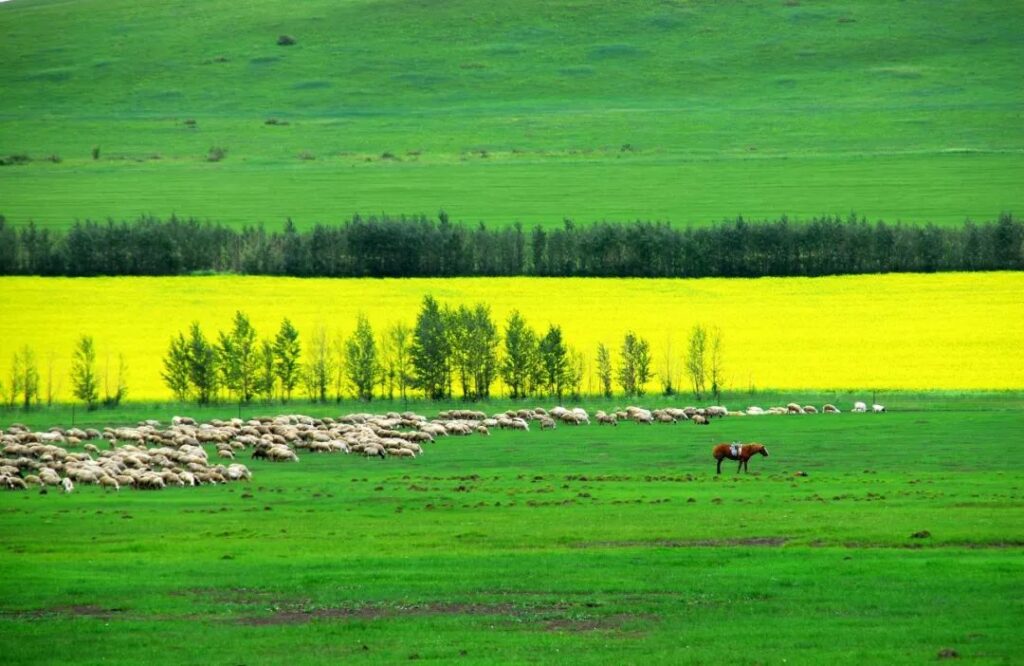
11.Hulun Lake
Hulun Lake is the only large marsh within thousands of miles in northern China. In July and August every year, in a river branch called Niugang that leads from Hulun Lake to Beil Lake, you can see schools of fish densely gathered in front of the fish weir, jumping joyfully.

By the tranquil lakeside, with changing light and rich colors, one’s eyes don’t want to rest for a moment, greedily appreciating the paintings of nature.
12.Manzhouli
This is a port city with a hundred years of history, gathering the customs of China, Russia, and Mongolia, and blending Chinese and Western cultures. It is known as the “Window of Asia”.

Here, there are beautiful castles scattered all over the ground, giant matryoshka dolls more than a dozen stories high, China’s largest national gate, and Russian girls all over the streets. It can be called the beautiful night view of the northern Little Hong Kong.
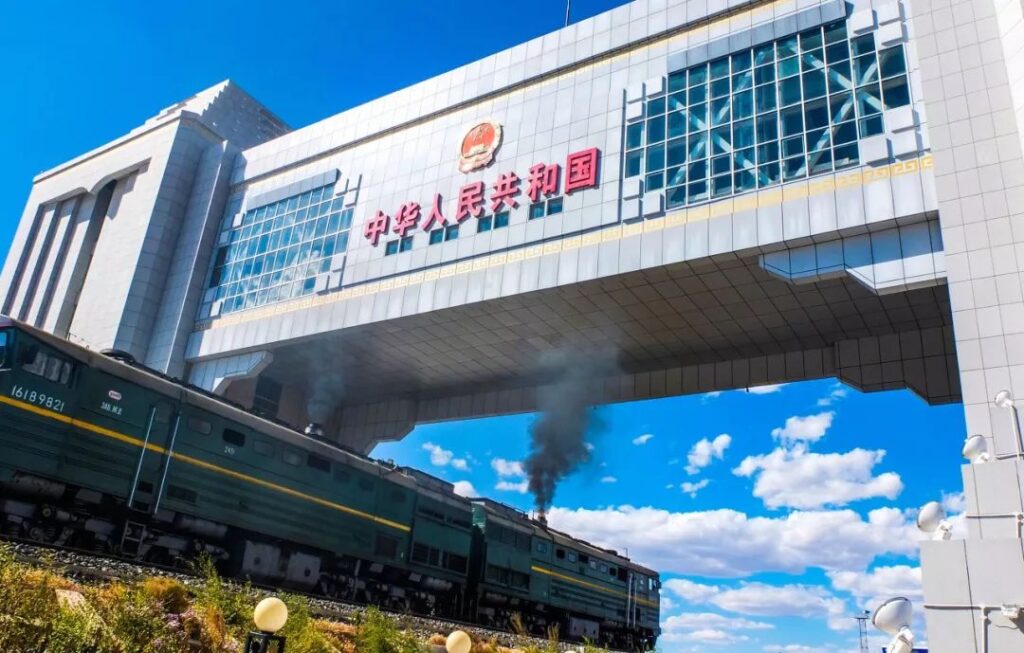
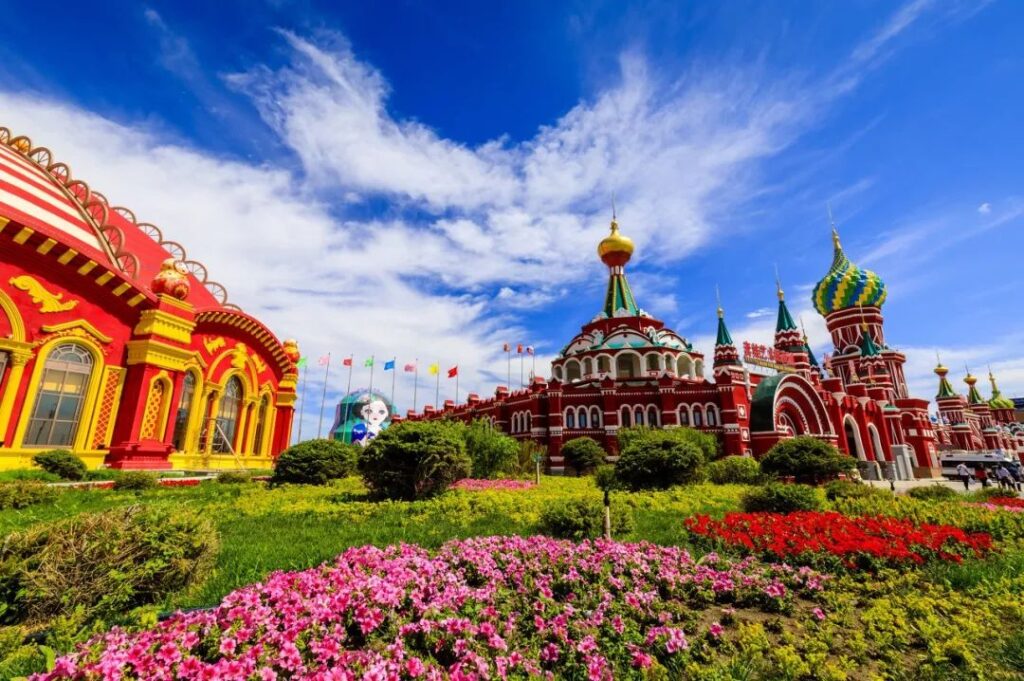
13.Enhe
This is the only Russian ethnic township in China, facing Russia across the river.
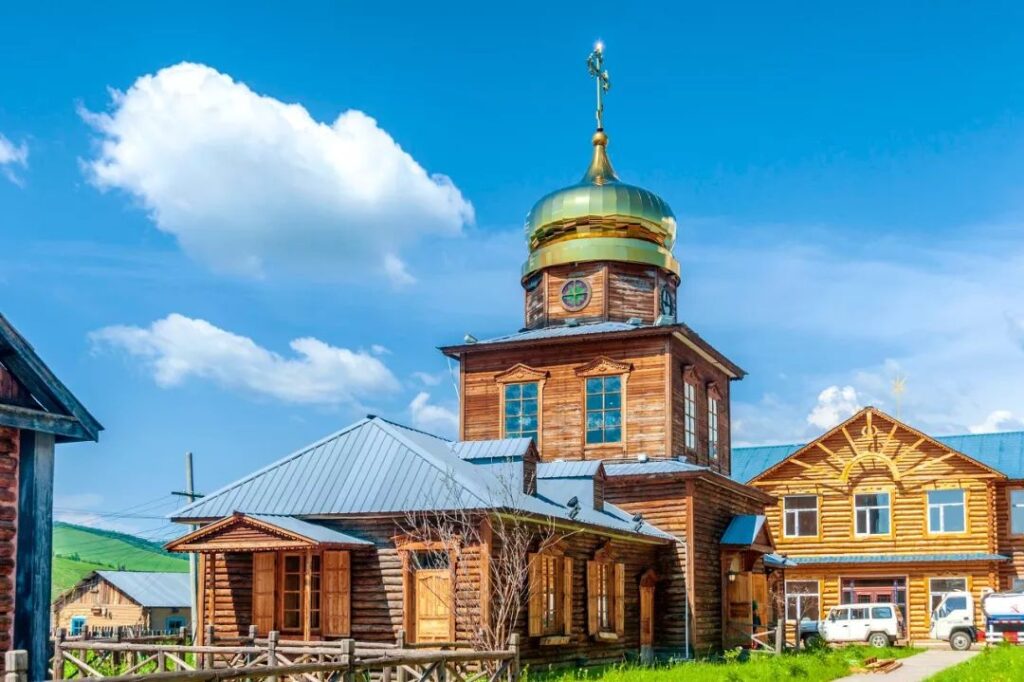
The buildings in the village are mostly Russian in style. The leisurely and pleasant European pastoral scenery, with pointed roofs and a beautiful sunset, is too beautiful for words to describe.
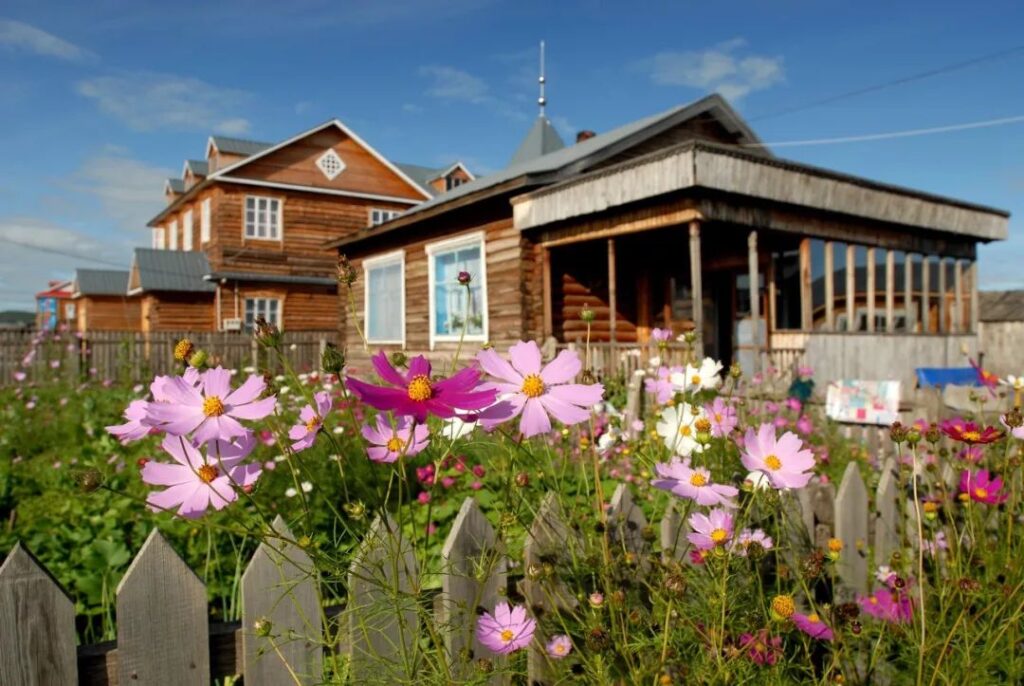
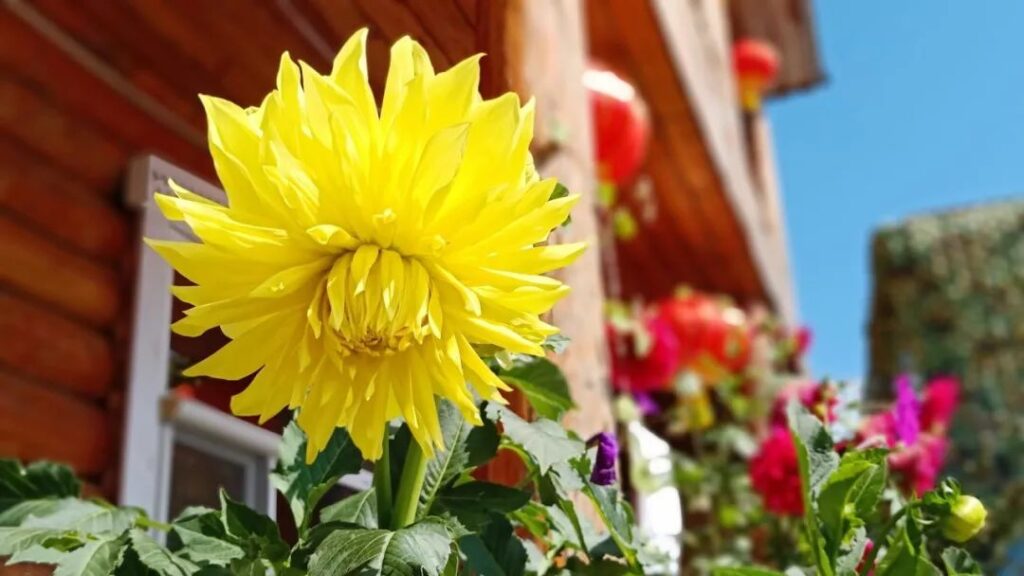
14.Erguna Wetland
The water of the Gen River winds through the lush greenery, leaving the most beautiful and graceful section in Erguna.
The 126,000-hectare wetland of the Gen River is also known as the “First Wetland in Asia”. At the same time, it is also the largest and best-preserved primeval forest wetland in China.
15.Birch Forest
The birch tree is the city tree of Erguna. In summer, the birch forest is lush green, shining in harmony with the azure sky, like a unique oil painting.
16.Moerdaoga National Forest Park
“In the south, there is Xishuangbanna; in the north, there is Moerdaoga.” Here, the mountains are undulating, the ancient trees are towering, the vegetation is rich, and the streams are dense. The scenery is very characteristic of the northern country.
17.Heishantou
When you come to Erguna, you must not miss the sunset at Heishantou. The low-pressure cloud layers, colorful colors, and traveling people – everything is like a scene from a movie.
18.Linjiang Village
The village is located along the Sino-Russian border river Erguna River, hence the name Linjiang Village.It has a history of more than 100 years. In the morning, ride a horse through the mountain ridges shrouded in morning mist, letting the dew wet your trouser legs.

In the afternoon, lie on the lounge chair in front of the wooden house and bask in the sun, letting time flow by itself.
Jumping out of the three realms, not in the five elements, is the true feeling of that moment.
19.Aoluguya
Deep in the forests of the Greater Khingan Range, there is a small town mainly engaged in hunting and raising reindeer. This is Aoluguya Ewenki Ethnic Township, where almost every household raises reindeer, and the reindeer are very docile.
In winter, walking on the streets and alleys of the town, you can often see reindeer pulling sleds rushing by.
20.Hailar National Forest Park
In summer, Hailar is fresh and cool, with lush grasslands, clear lakes, verdant forests, unique folk customs, and a long history, making it a summer resort in the hearts of many people.
21.Ejina Populus Euphratica Forest
“Living but not dying for a thousand years, dying but not falling for a thousand years, falling but not decaying for a thousand years” – this is a portrayal of the life of the Populus euphratica forest.
The millennial undecayed Populus euphratica dead wood, the stunning life landscape, and the good light and shadow conditions make this a paradise for photography enthusiasts.
22.Badain Jaran Desert
The beauty of the Badain Jaran Desert lies in its magnificence, its wonder, and its profundity.
Sand mountains, lakes, singing sands, and odd springs, along with the golden sands and the setting sun, form the wondrous natural landscape of the Badain Jaran Desert.
23.Juyan Lake
The historical Juyan Lake consisted of three lakes: East, West, and North. The lake surface rippled, and reeds grew along the shore.
Swans, geese, cranes, and ducks often come here to roost. The sunrise at Juyan Lake is very famous.
Every day before dawn, the lakeside is filled with people waiting for the sunrise, and photographers of all kinds set up their long and short guns to occupy a piece of land.
24.Panlong Gorge
This is a famous gorge on the Ulan Butong Grassland. There is a winding small river flowing all year round at the bottom of the gorge, like a swimming dragon lying in the beautiful valley.
25.Hongshan Military Horse Farm
This is the intersection of hills and plains, with the elegance and gentleness of the south and the ruggedness and masculinity of the north.
It is a photography village, a natural gallery, and an open-air studio.
26.Tengger Desert
Although the Tengger Desert is not the largest desert, its sand peaks are magnificent and grand, its sand grains are fine and soft, and its color is golden and shiny, giving it a unique character. It is also the filming location of the movie “The Mausoleum of the Emperor”.
27.Western Fantasy Valley
The two walls of the valley are purple-red coarse sandstone. Due to the action of flowing water and wind erosion, nature has carved various strange shapes in the valley.

Danxia Landform has draped a red-brown layer over the gorge, while the Yardang landform has put a magnificent and rugged shell on it, making it majestic and spectacular.
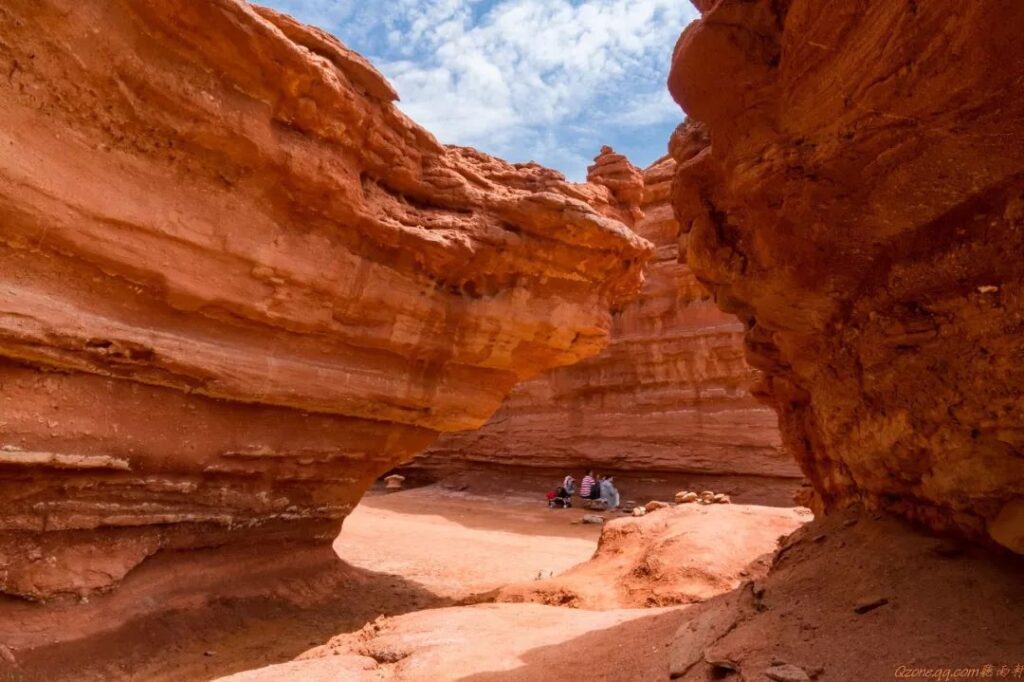
Thousands of miles of narrow border lines have created numerous exotic scenic spots. The endless grasslands and exotic customs are its best calling cards.
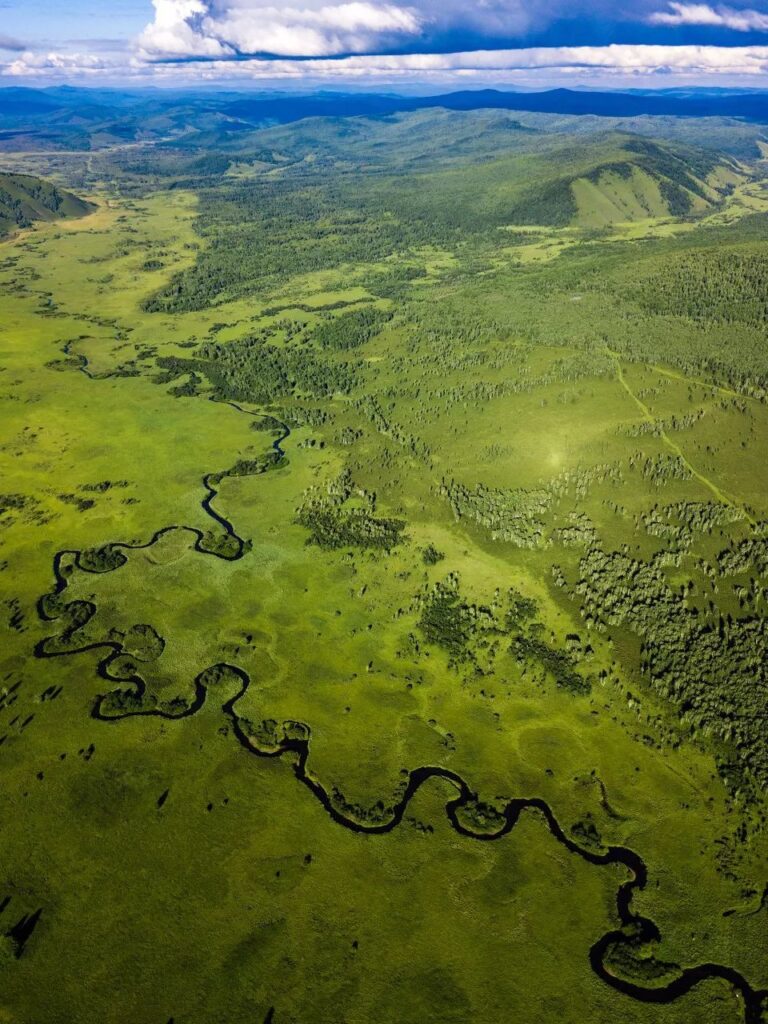
In everyone’s heart, there are always some distant places worth going to again and again; and Inner Mongolia is such a place.
